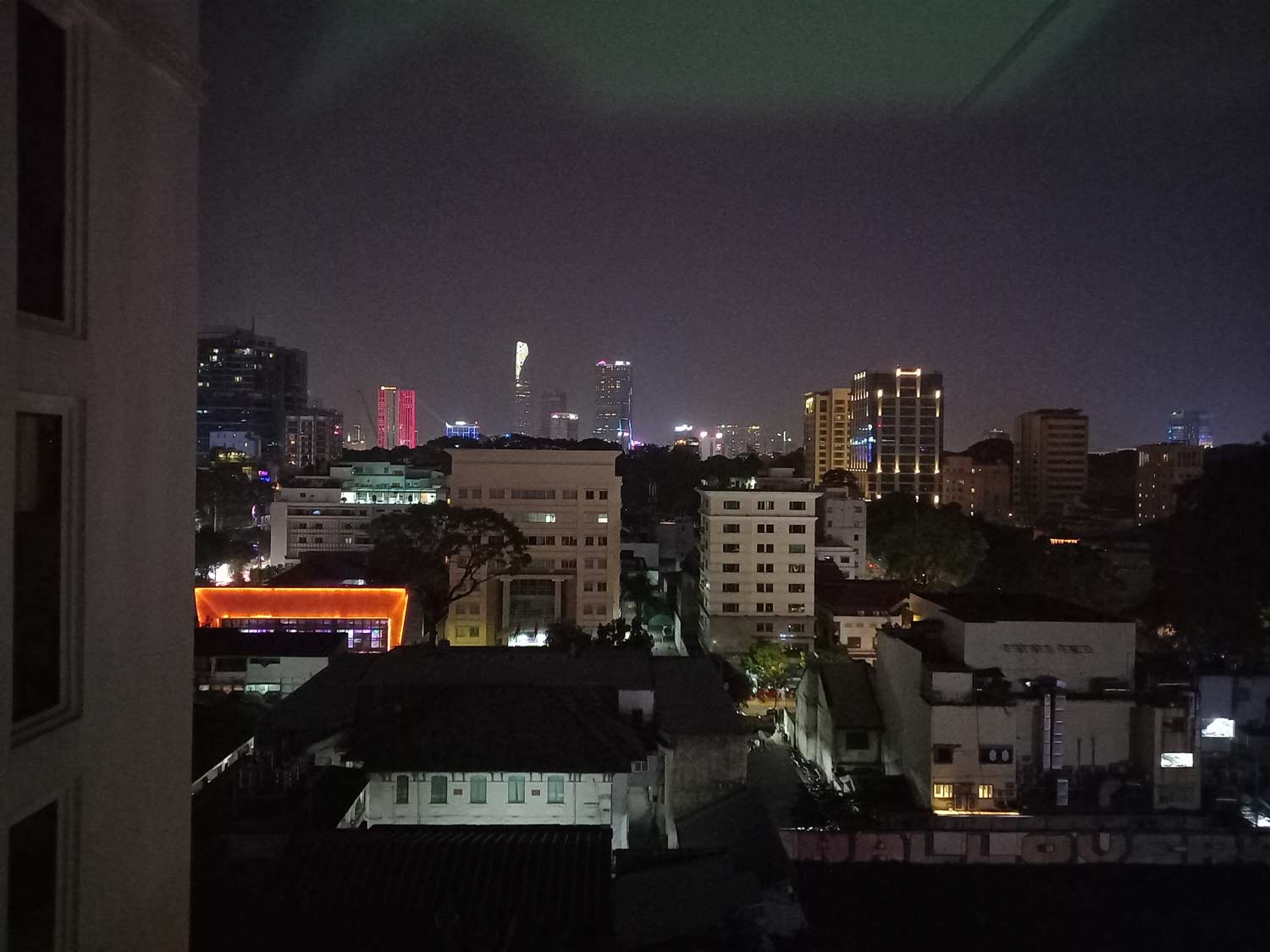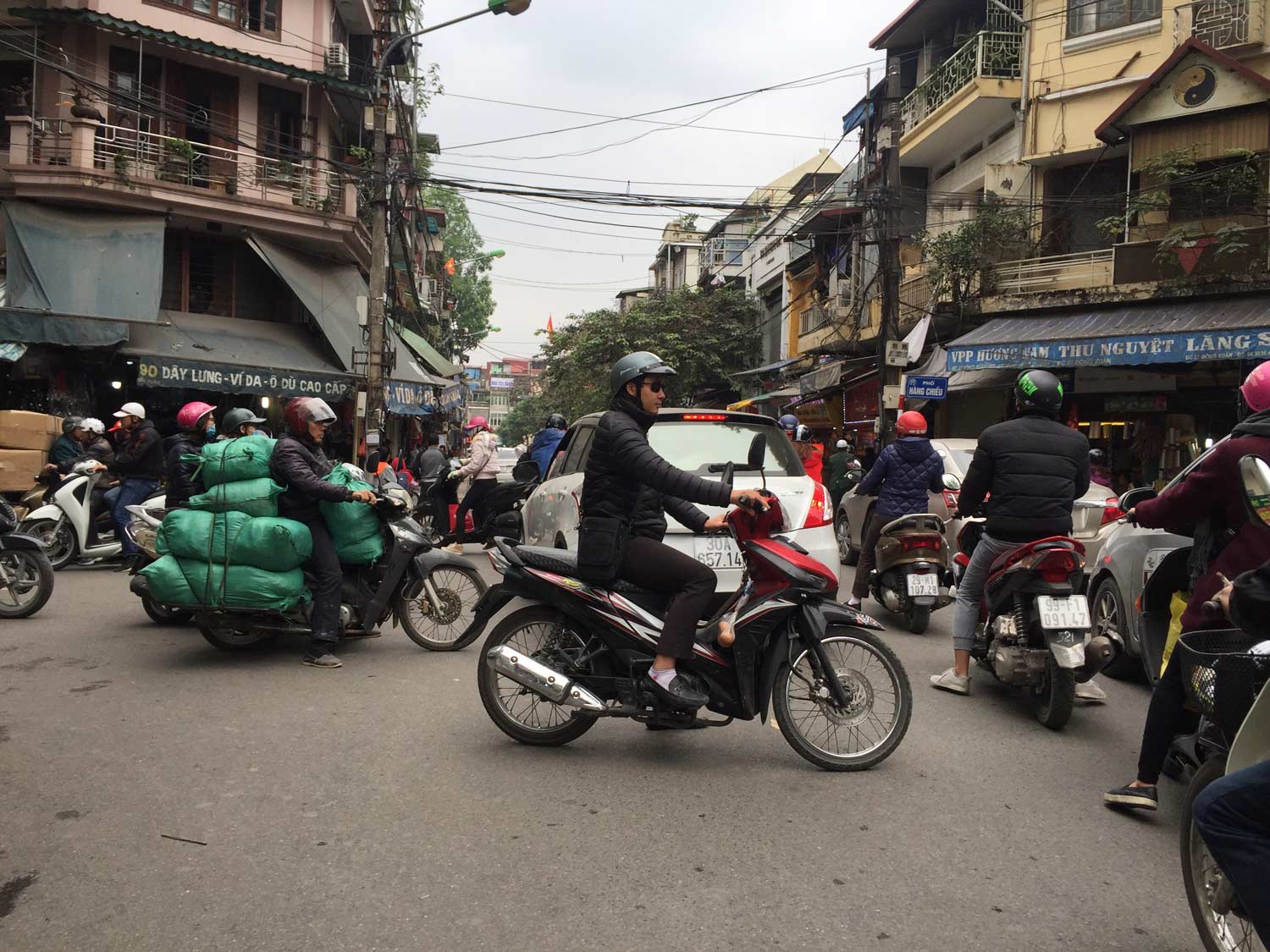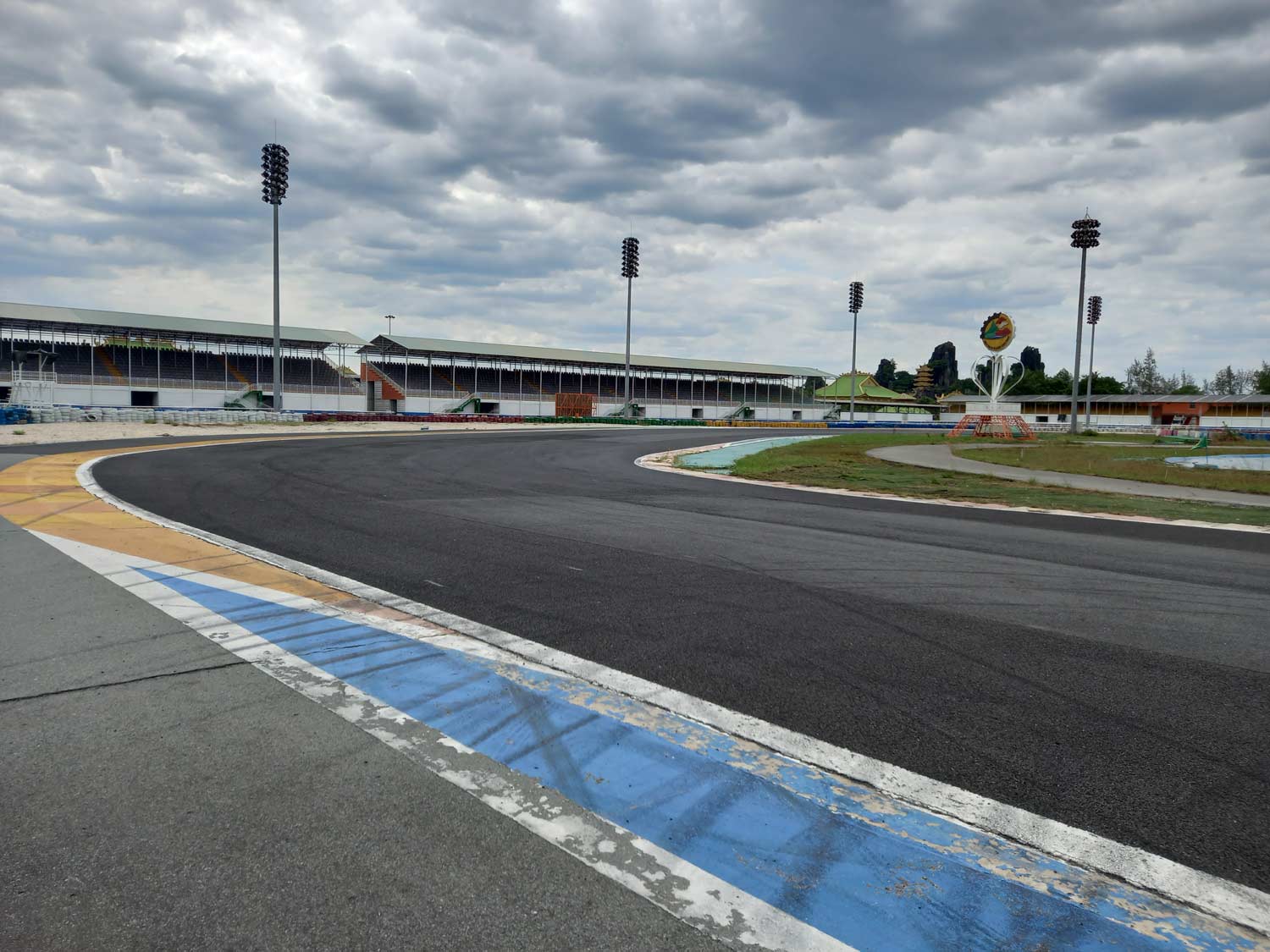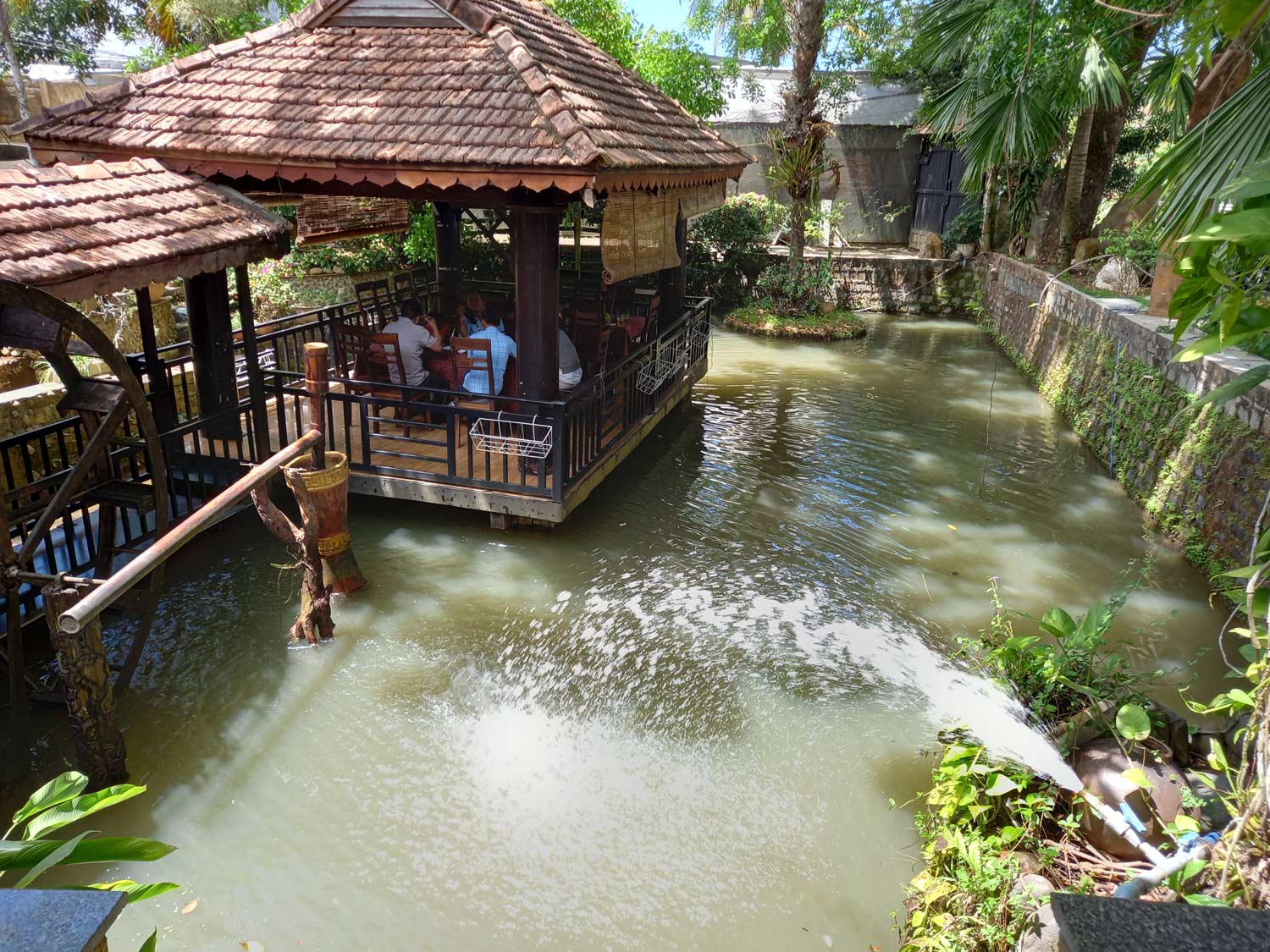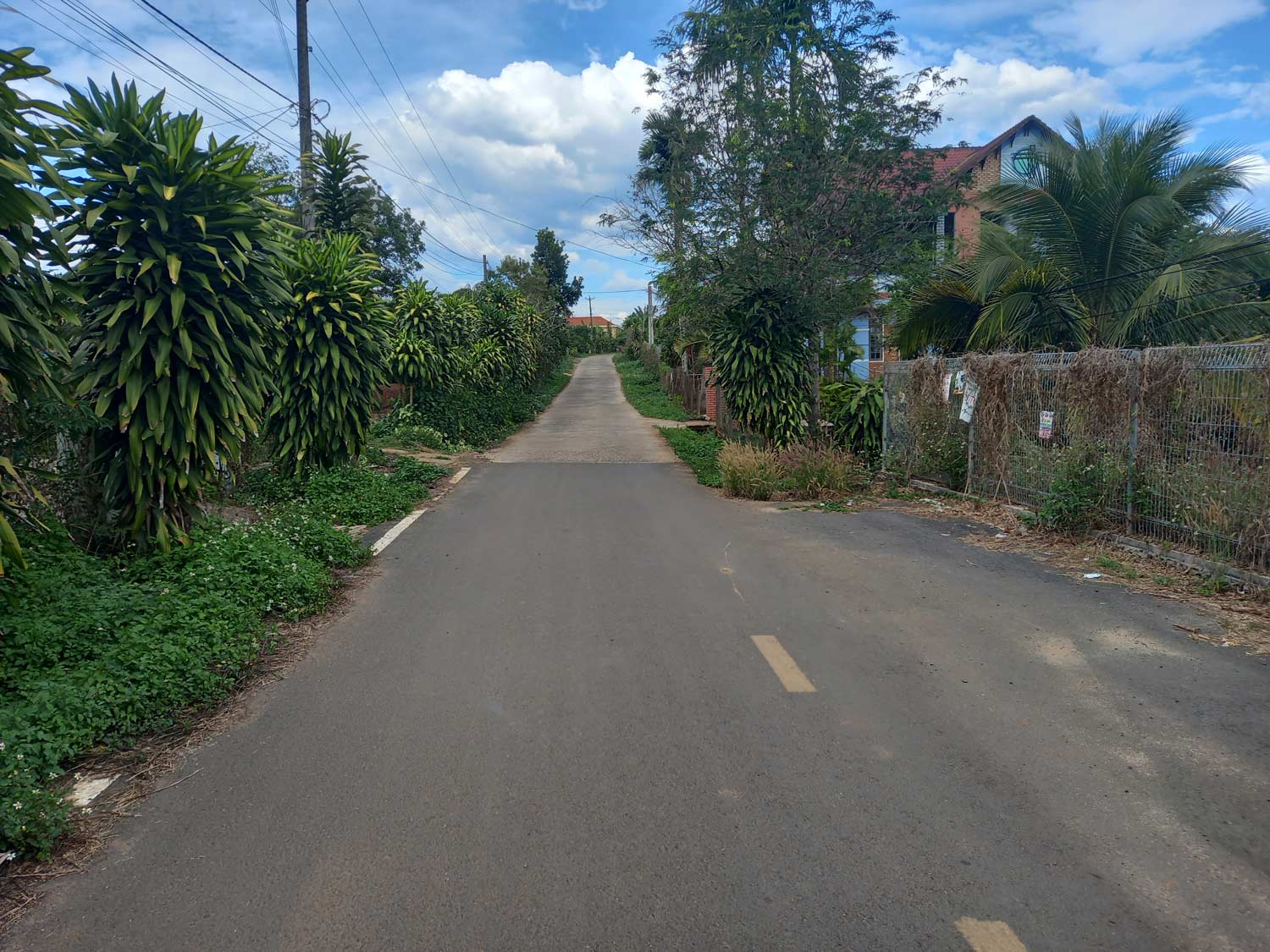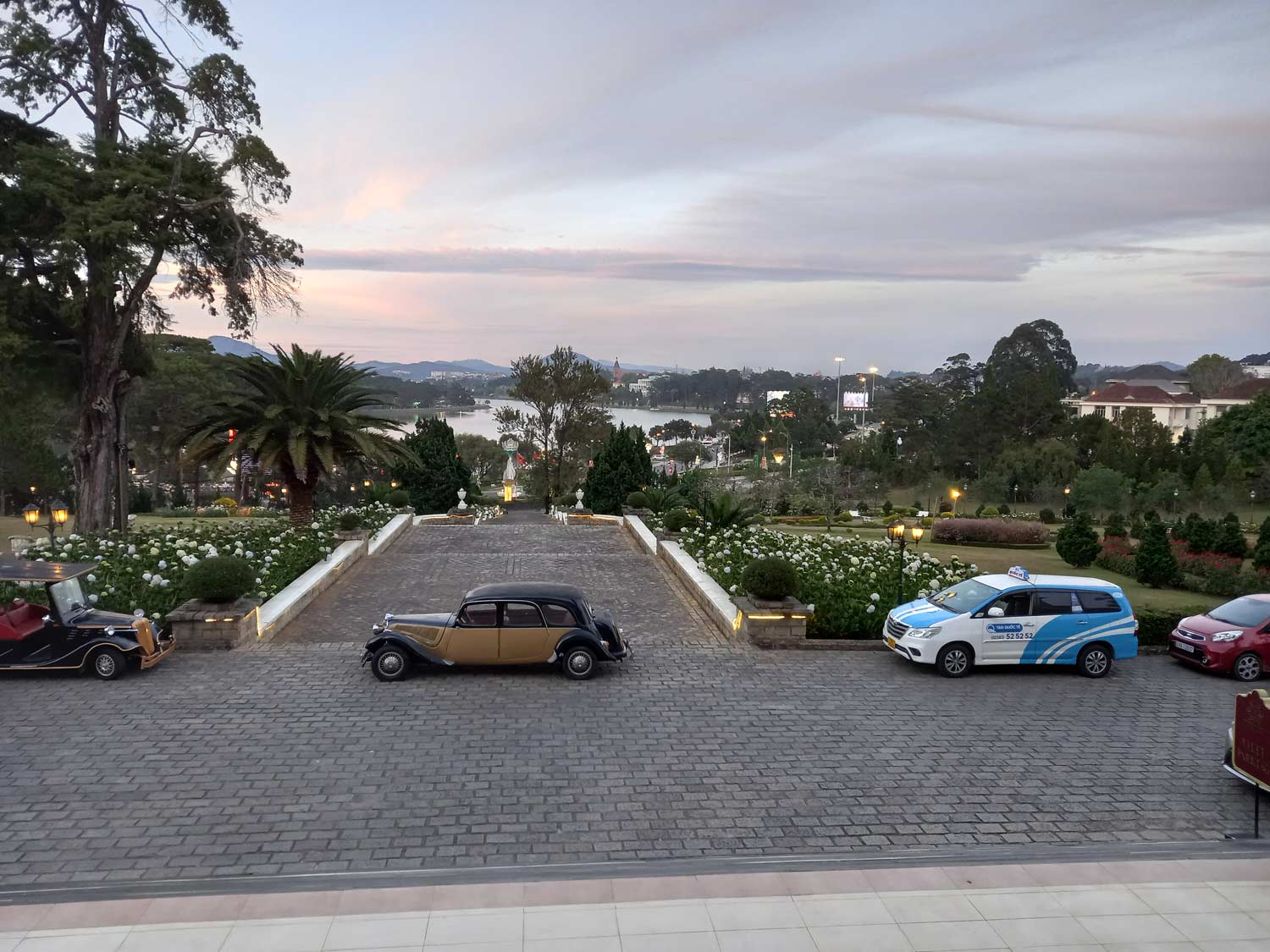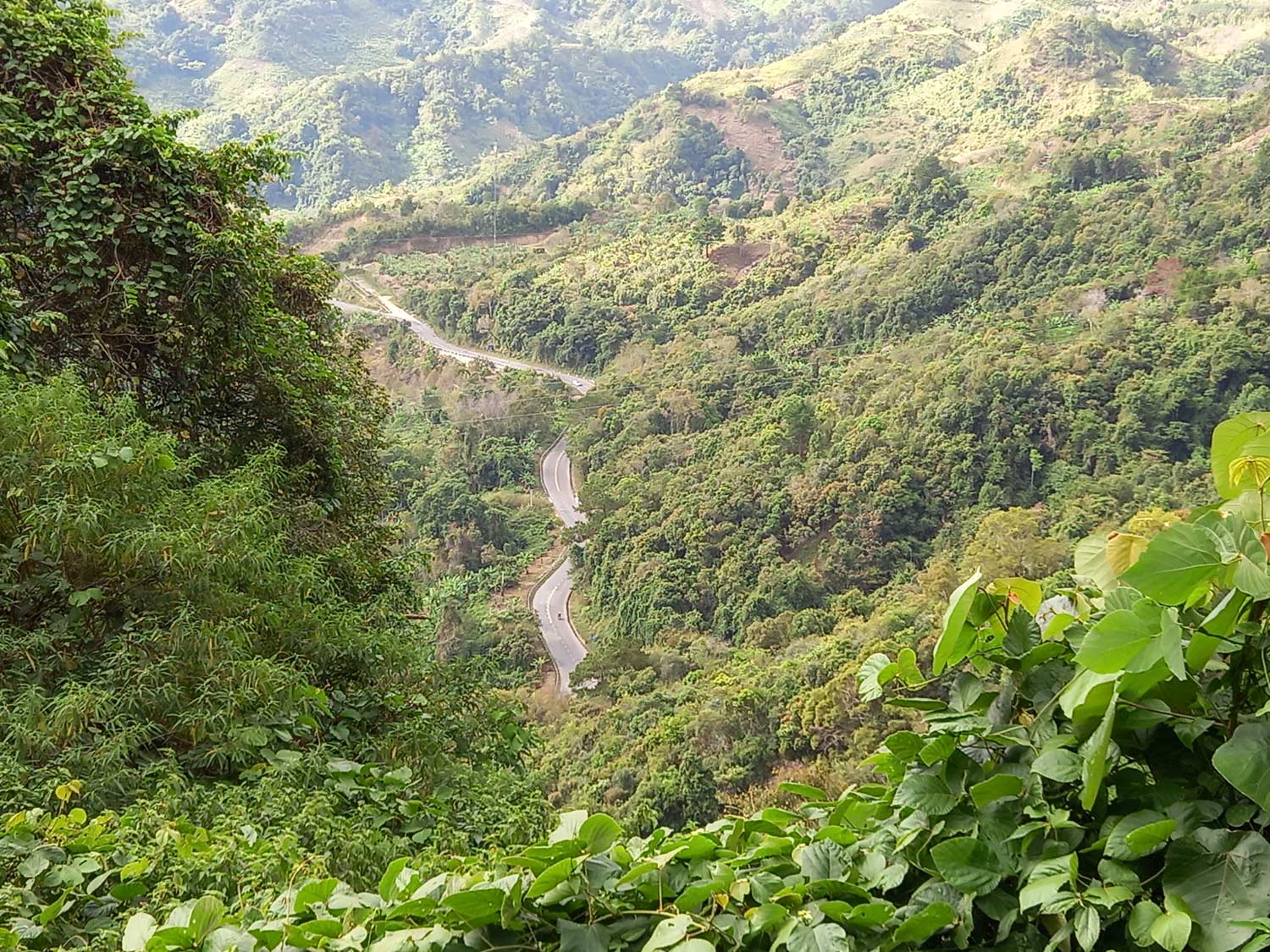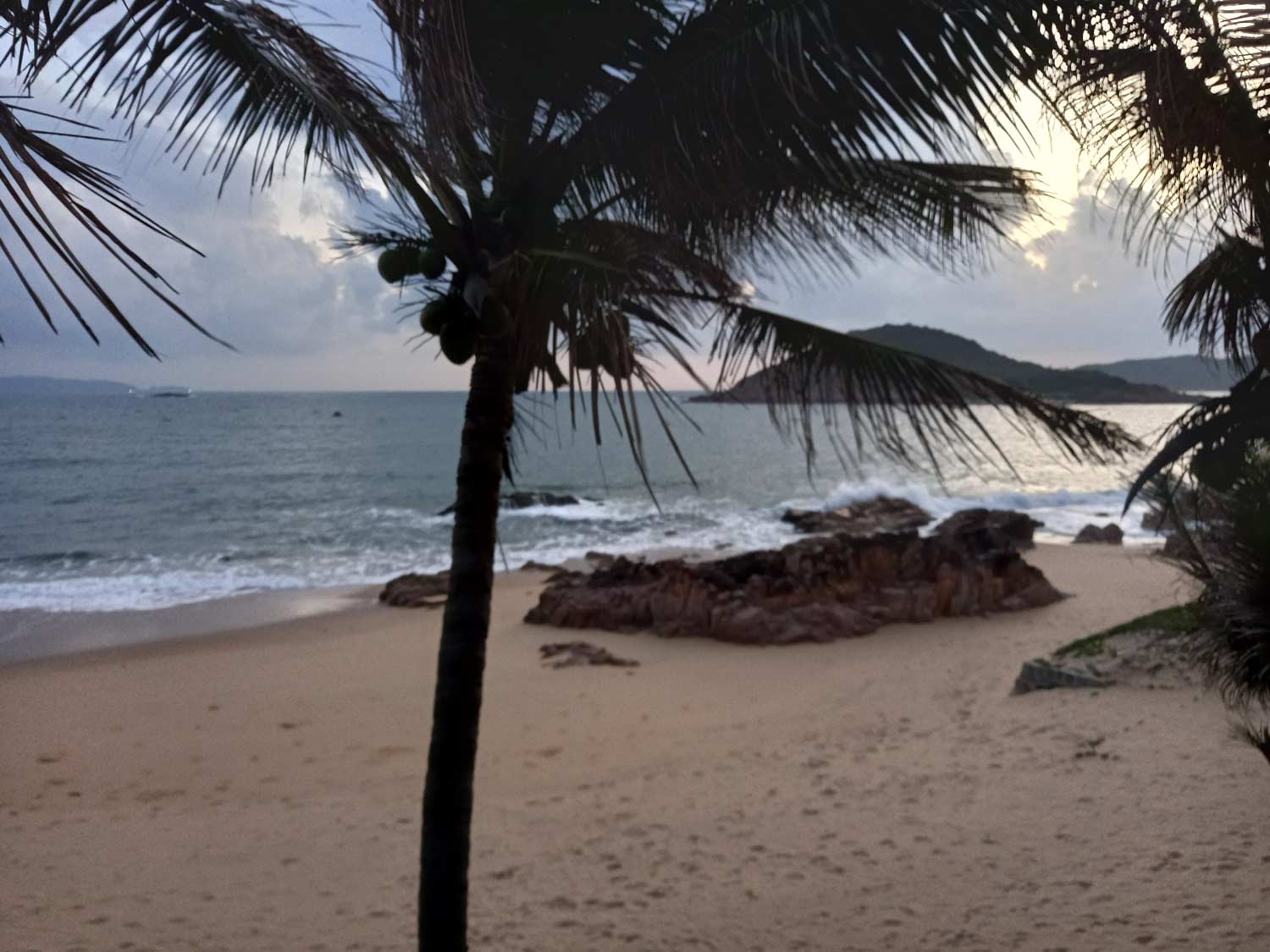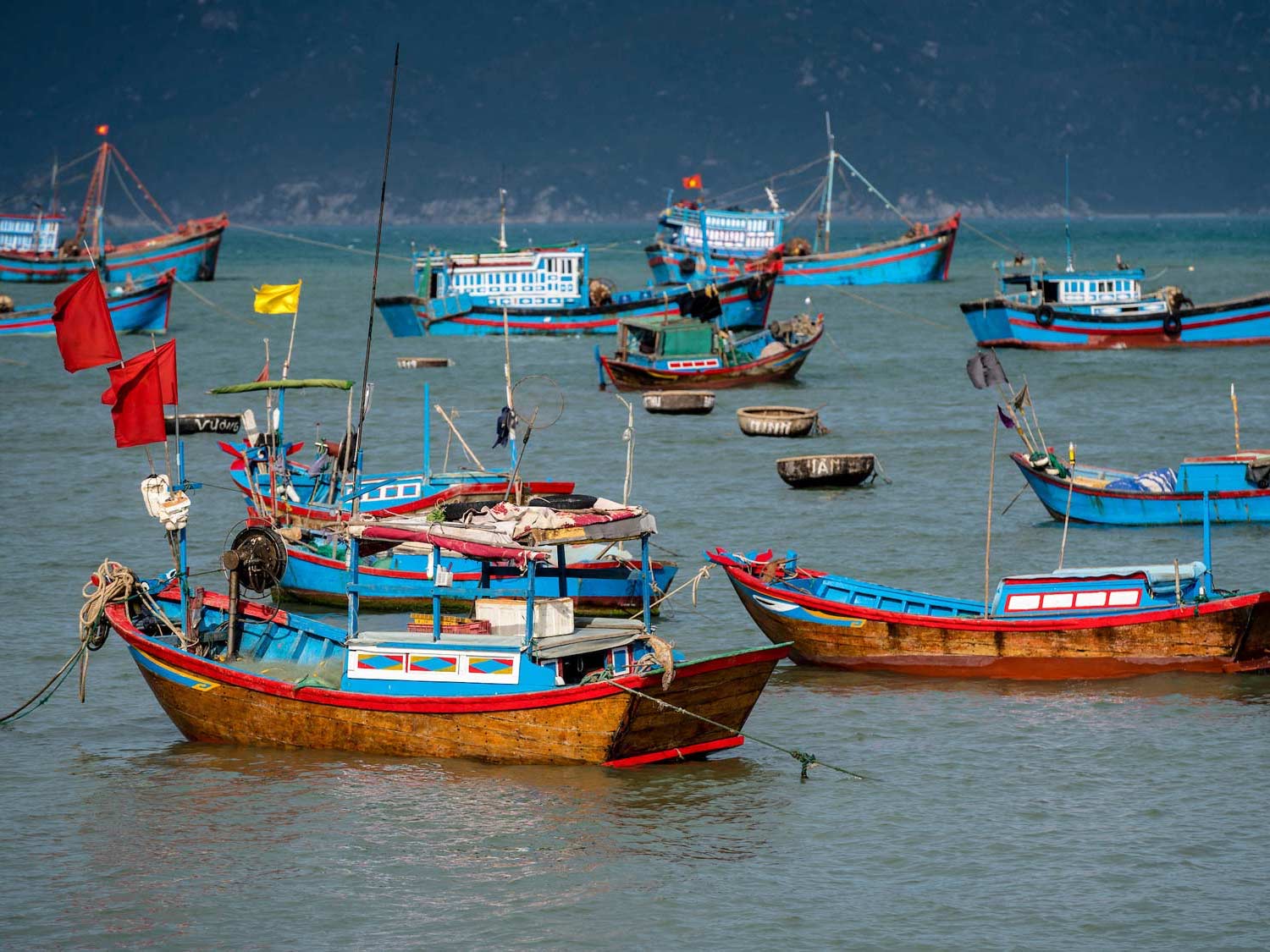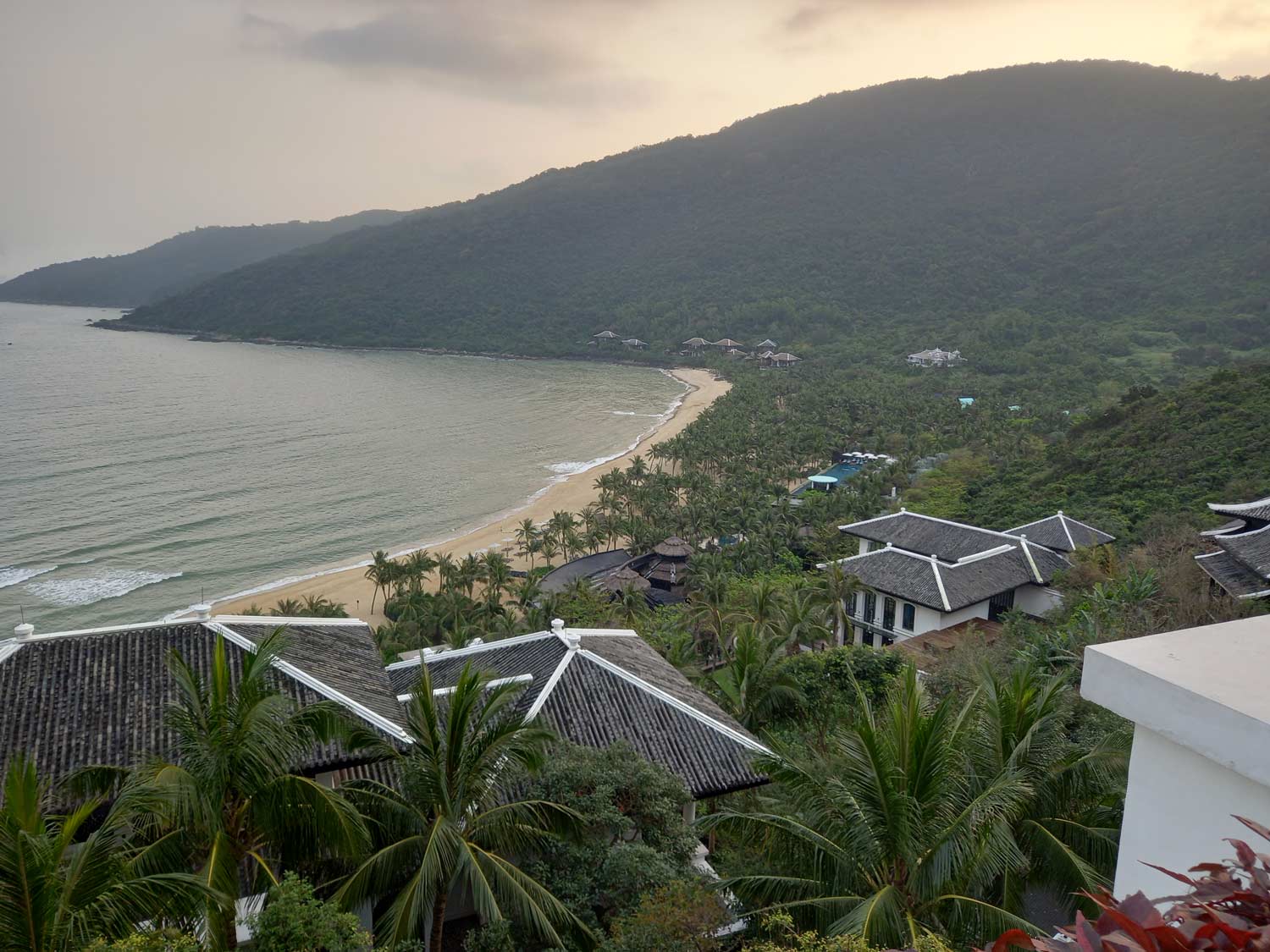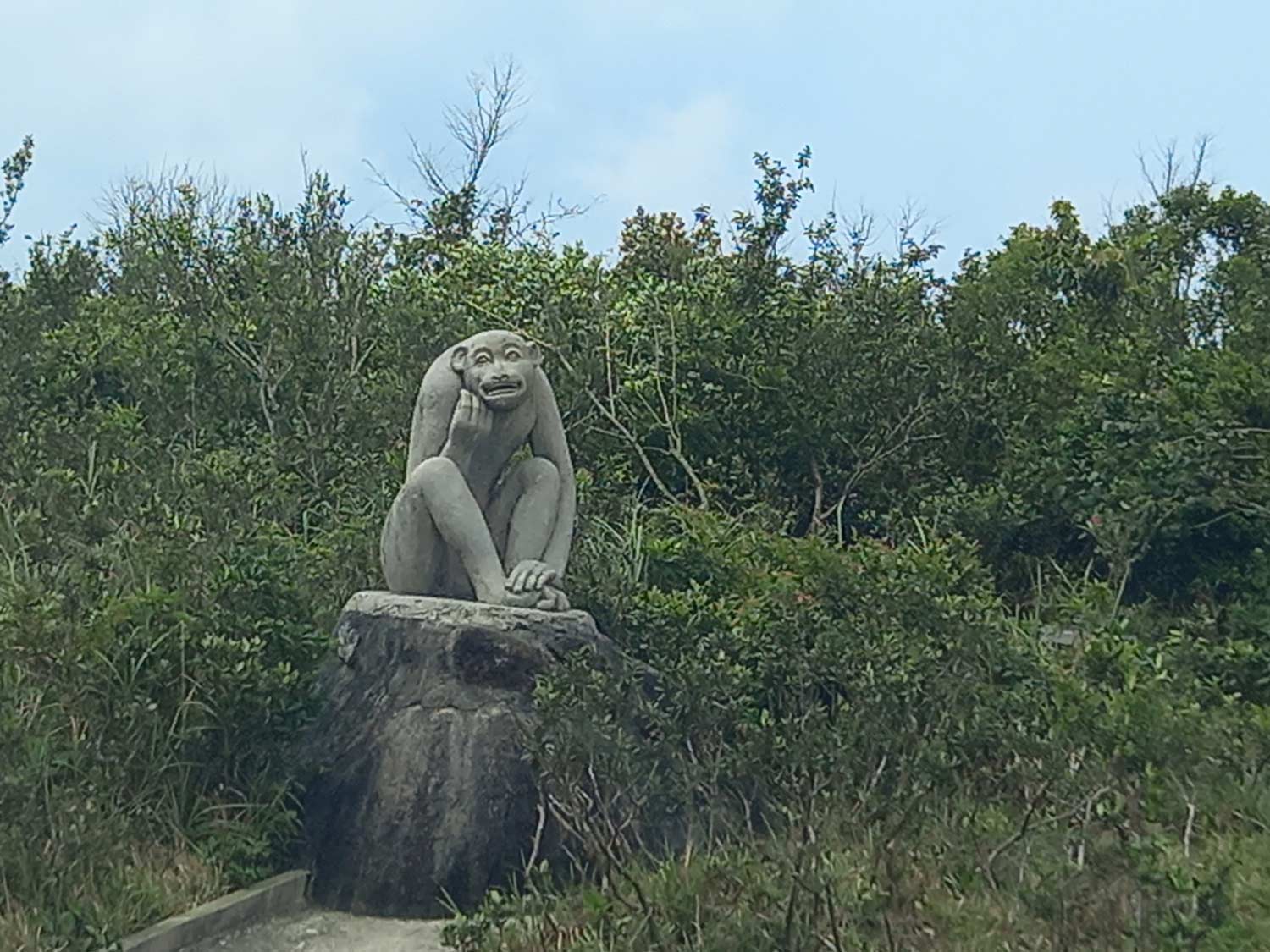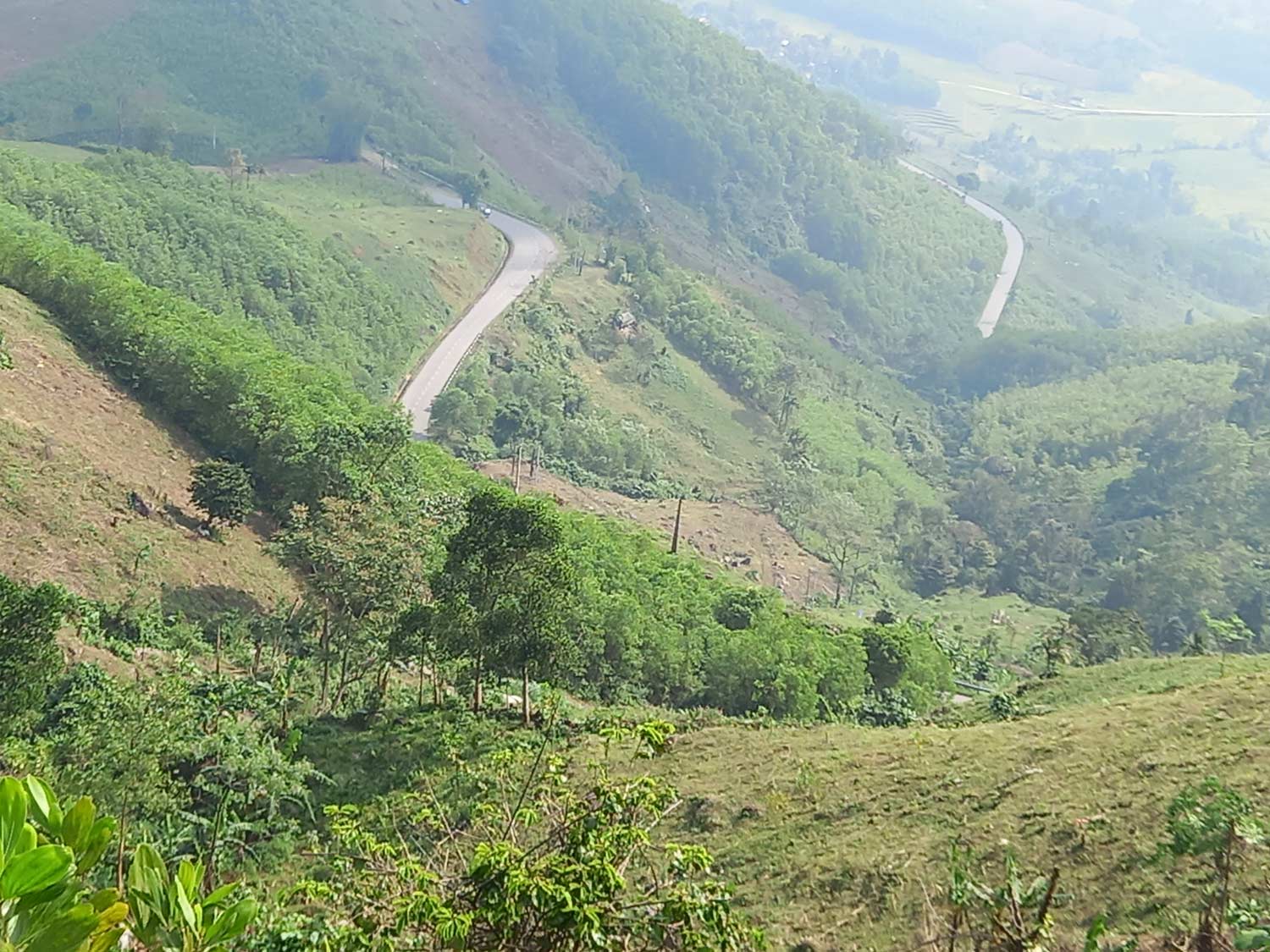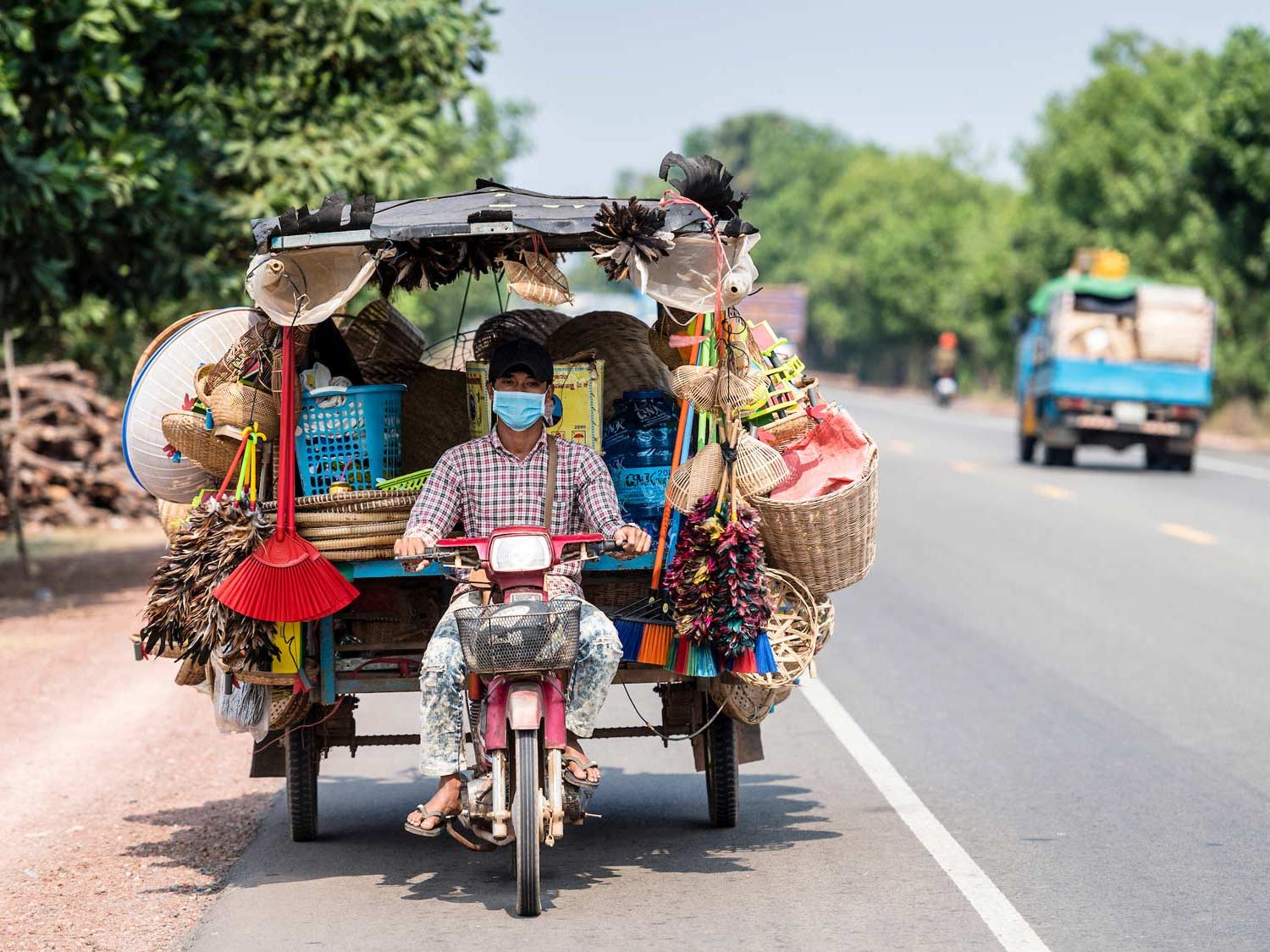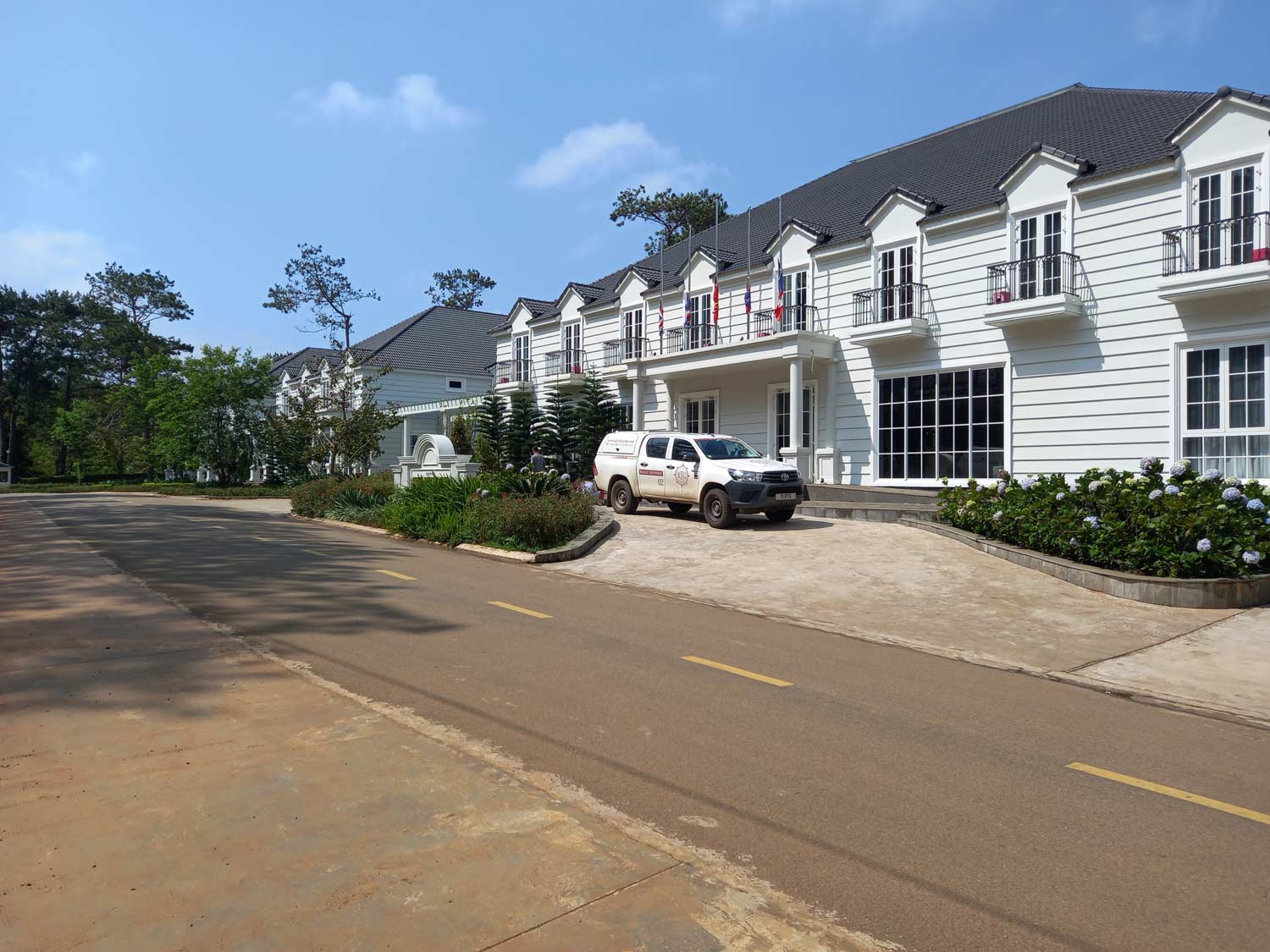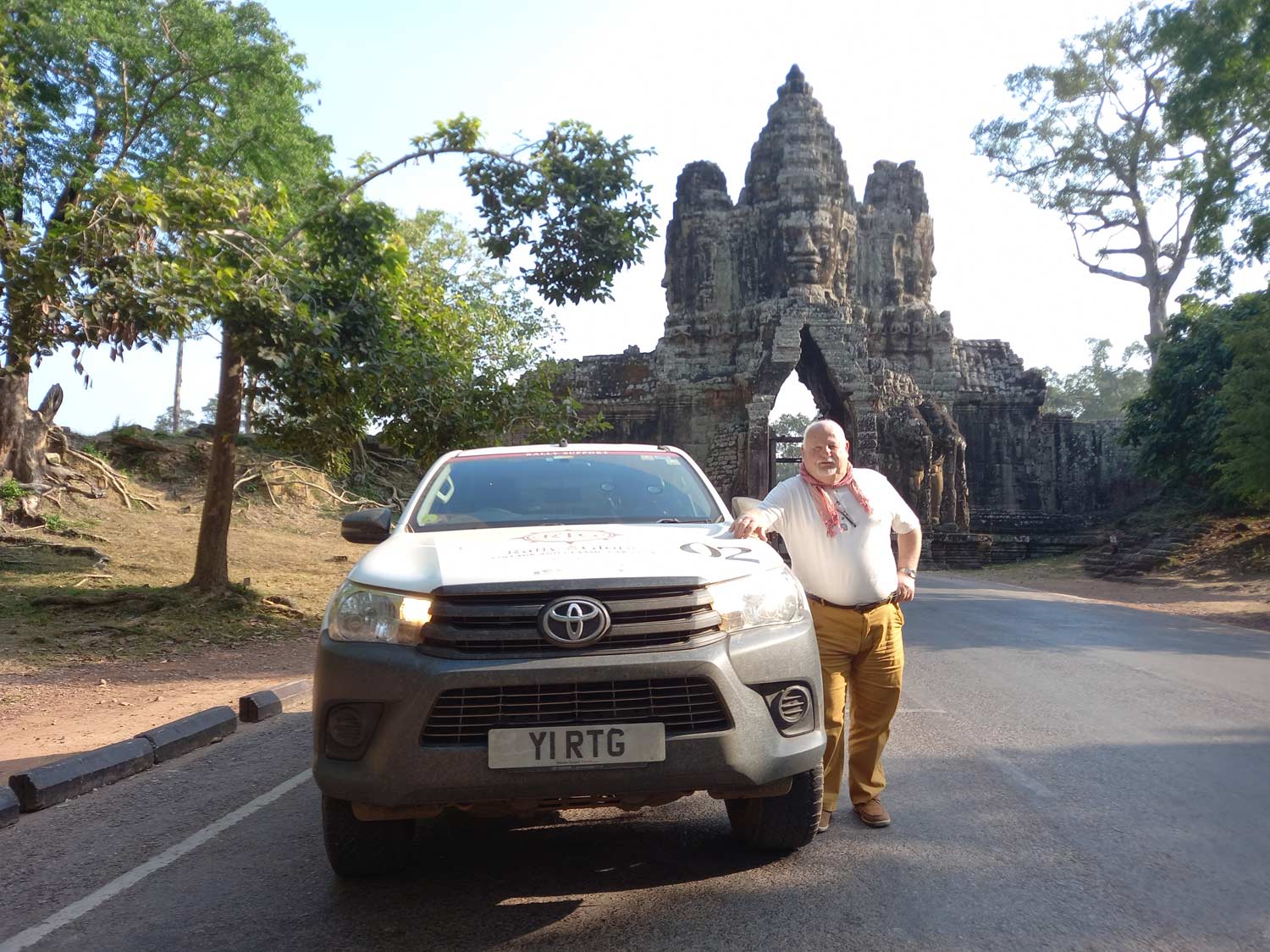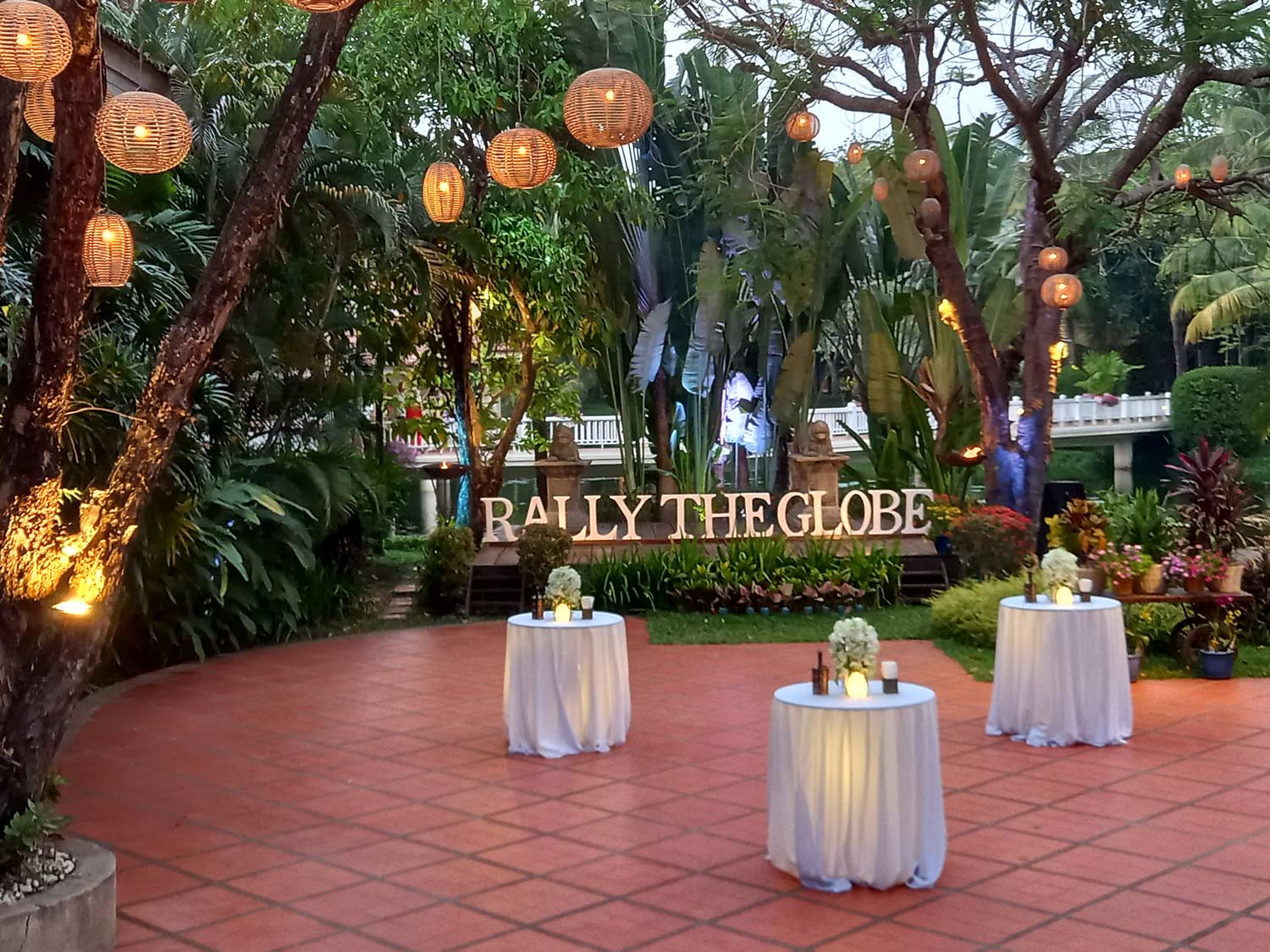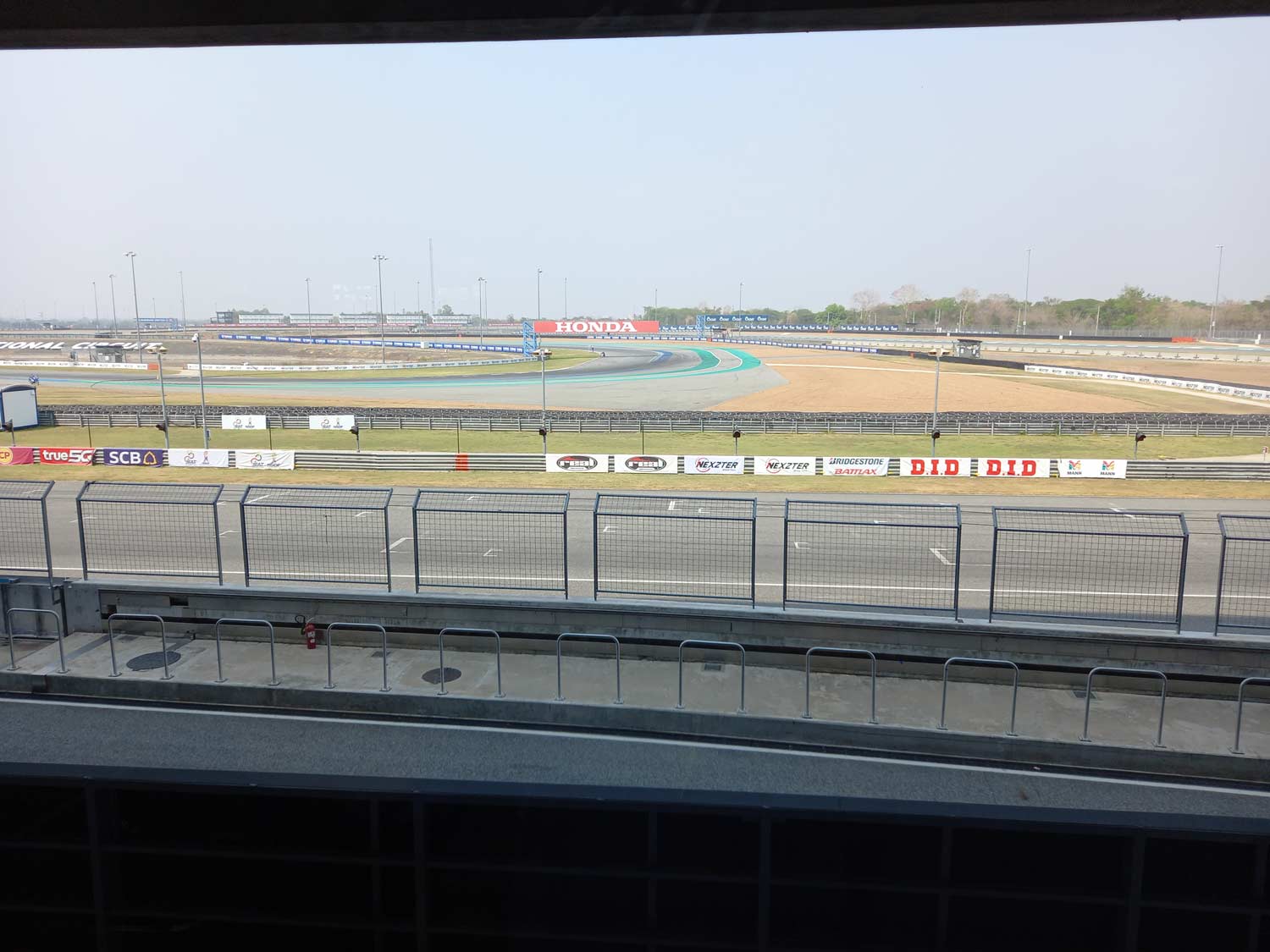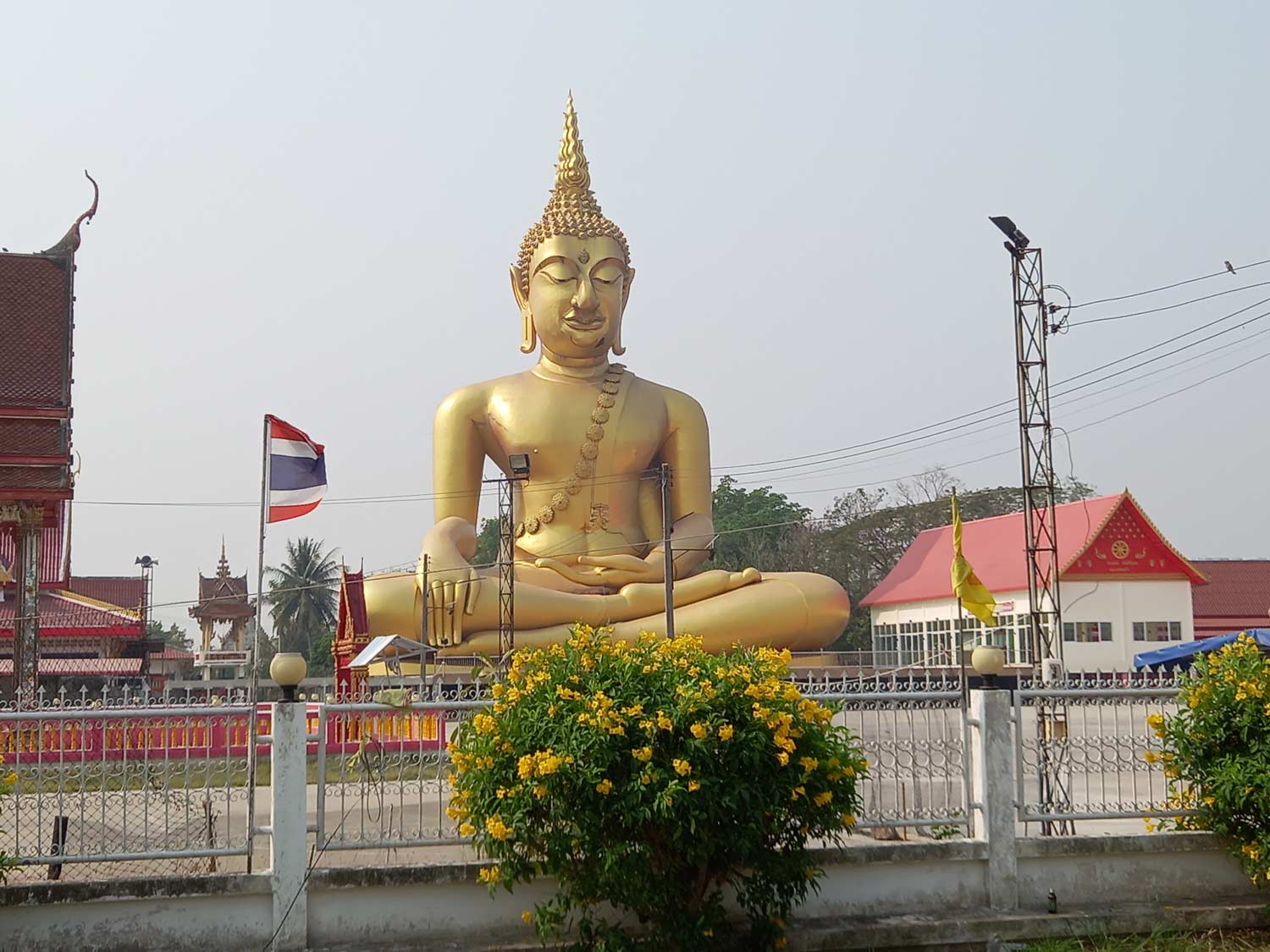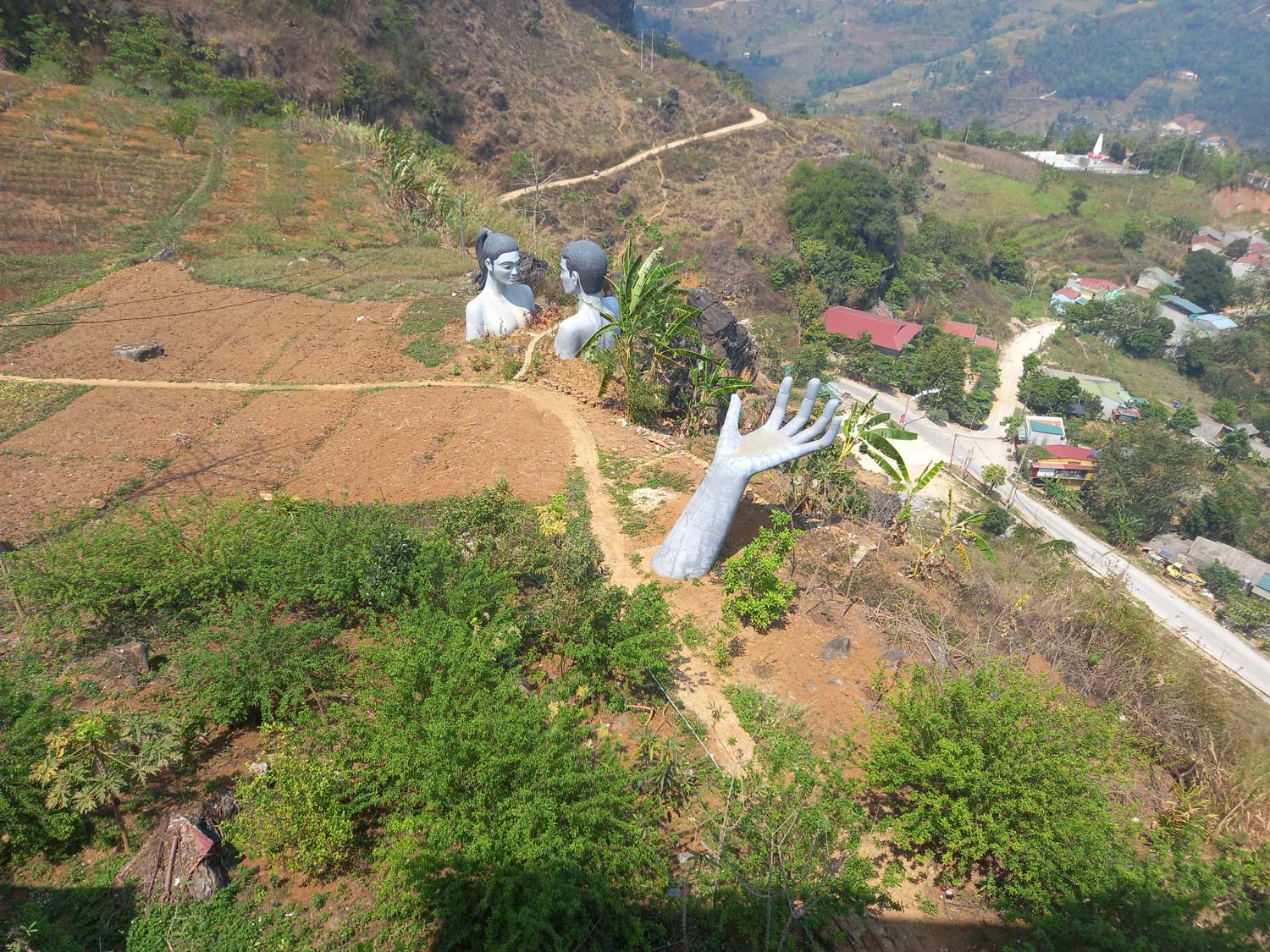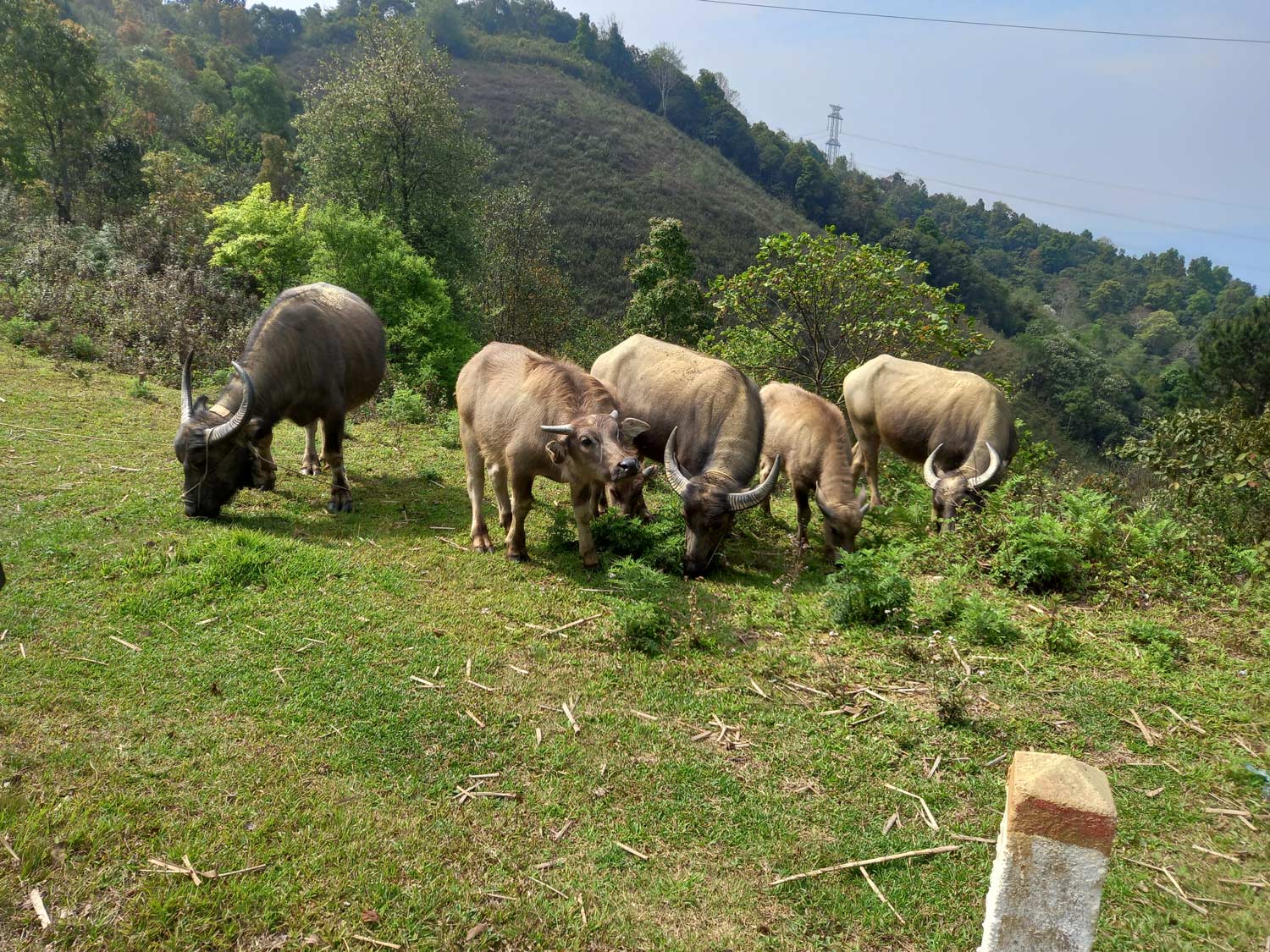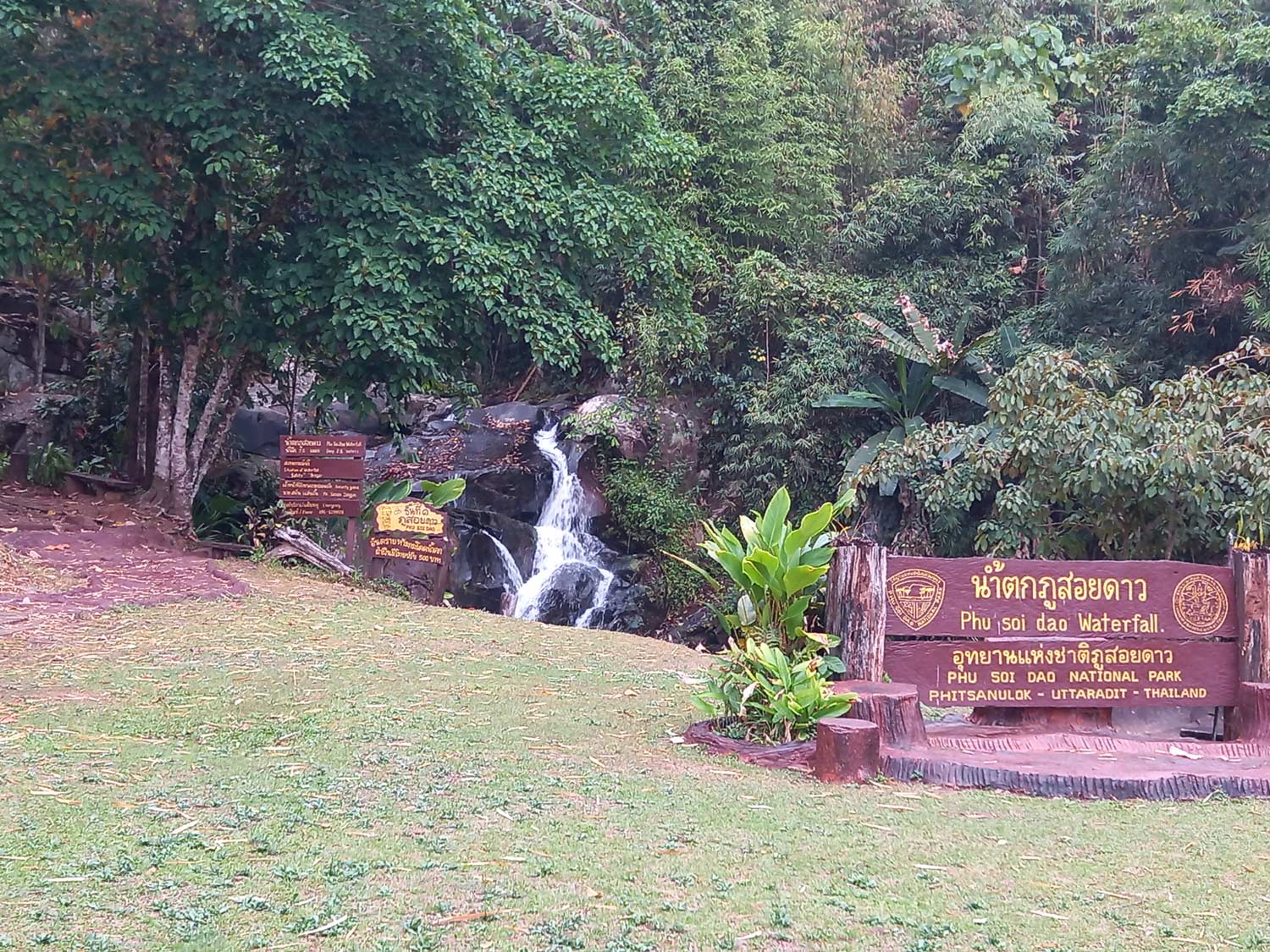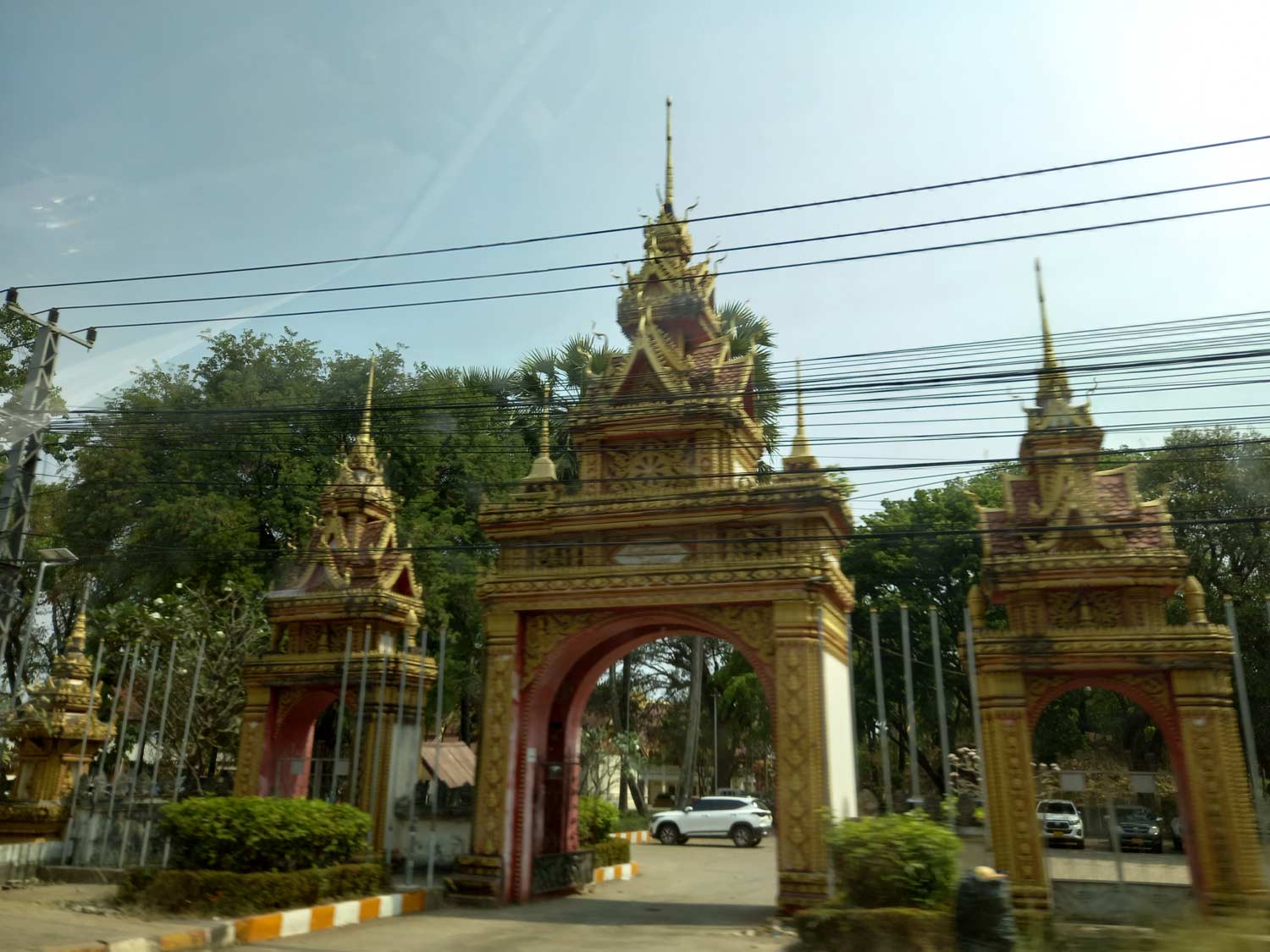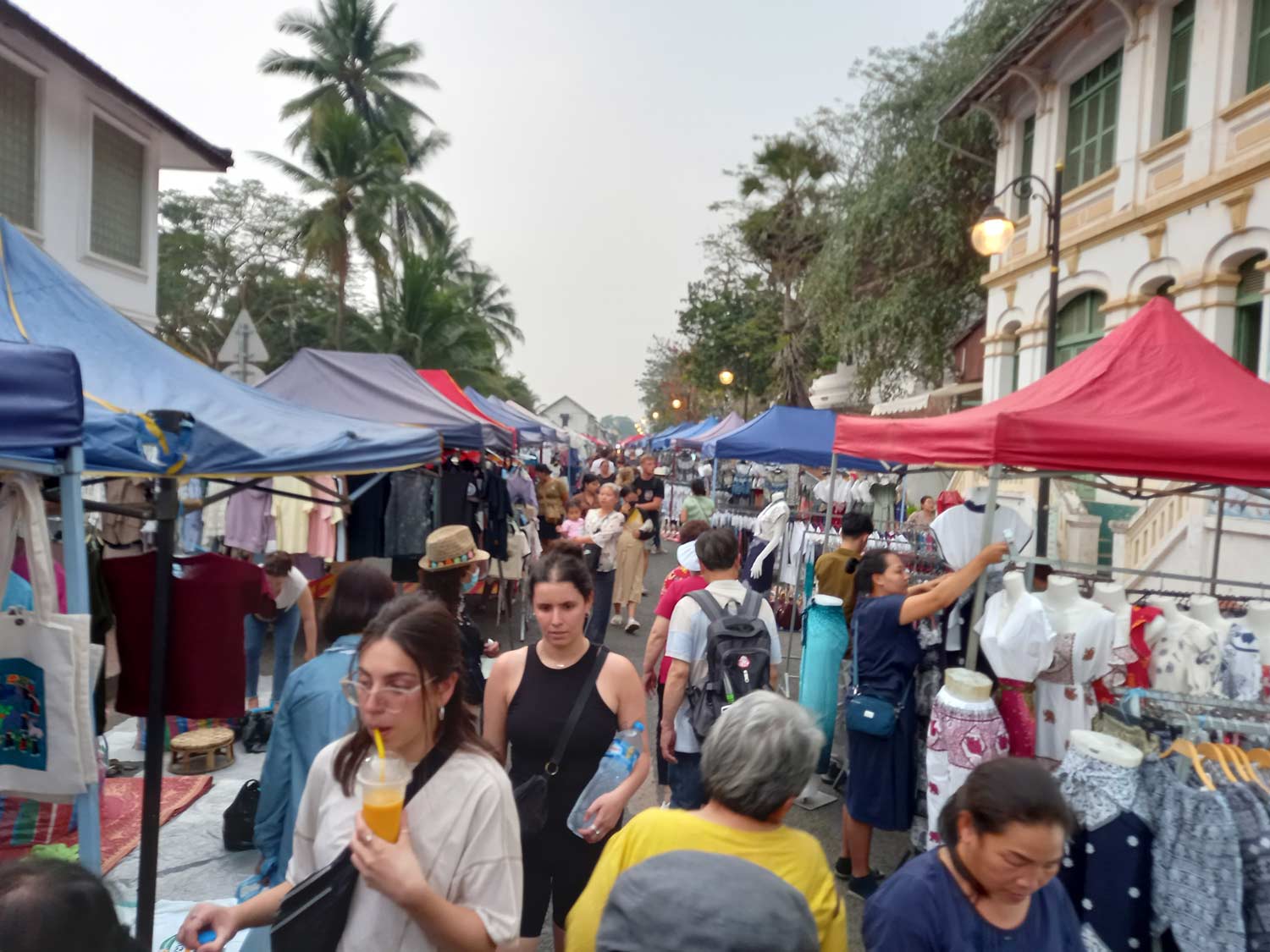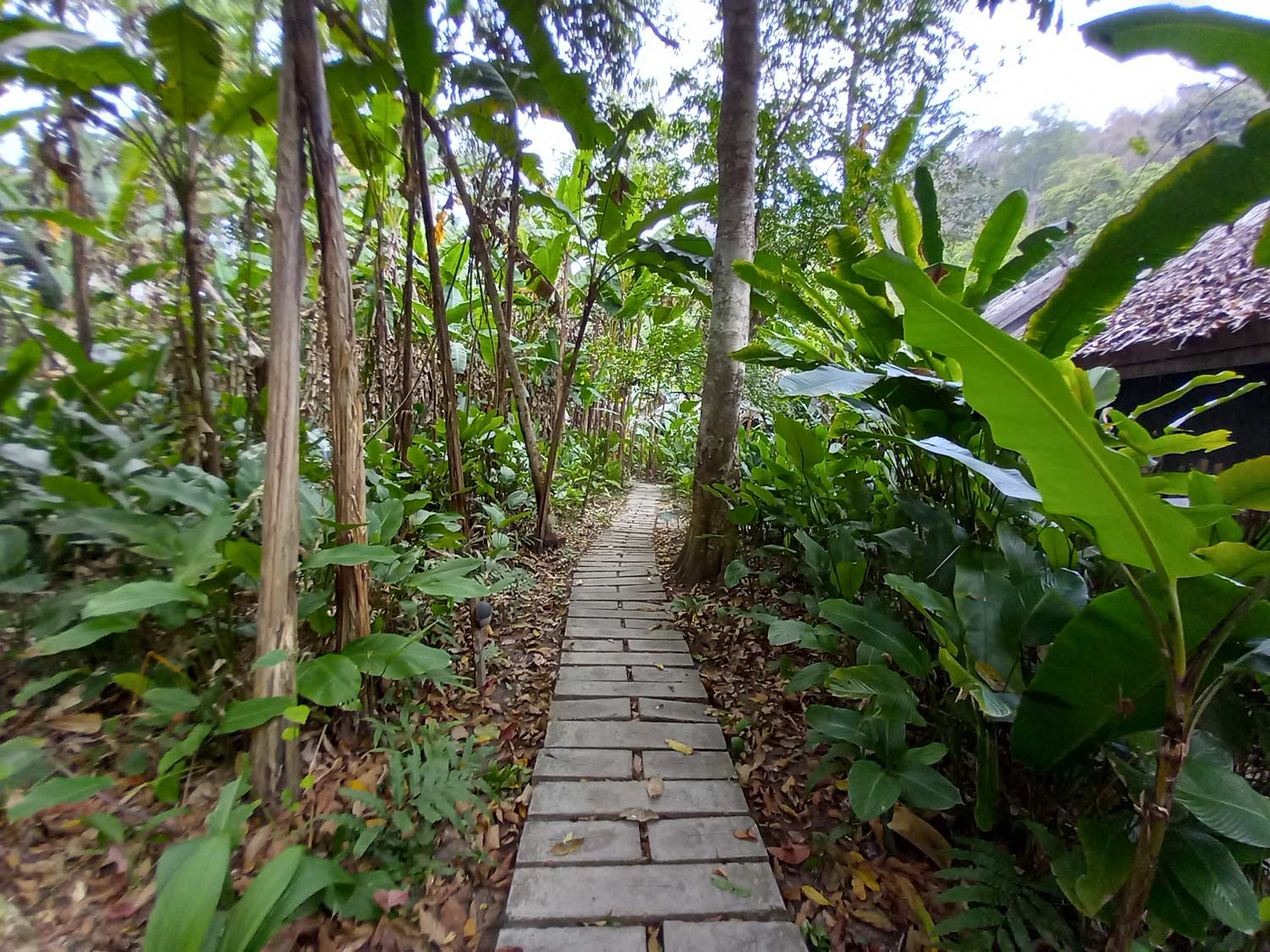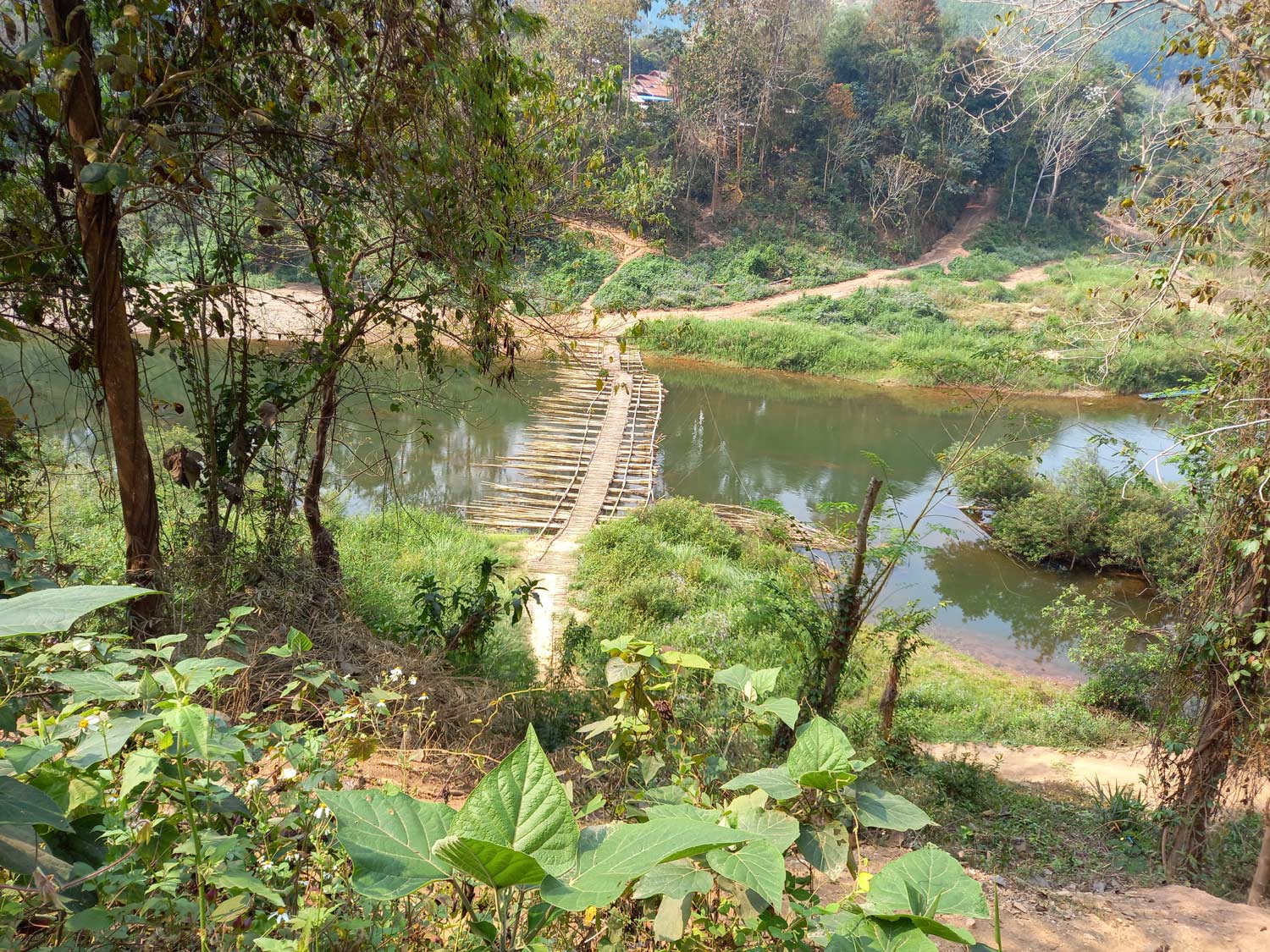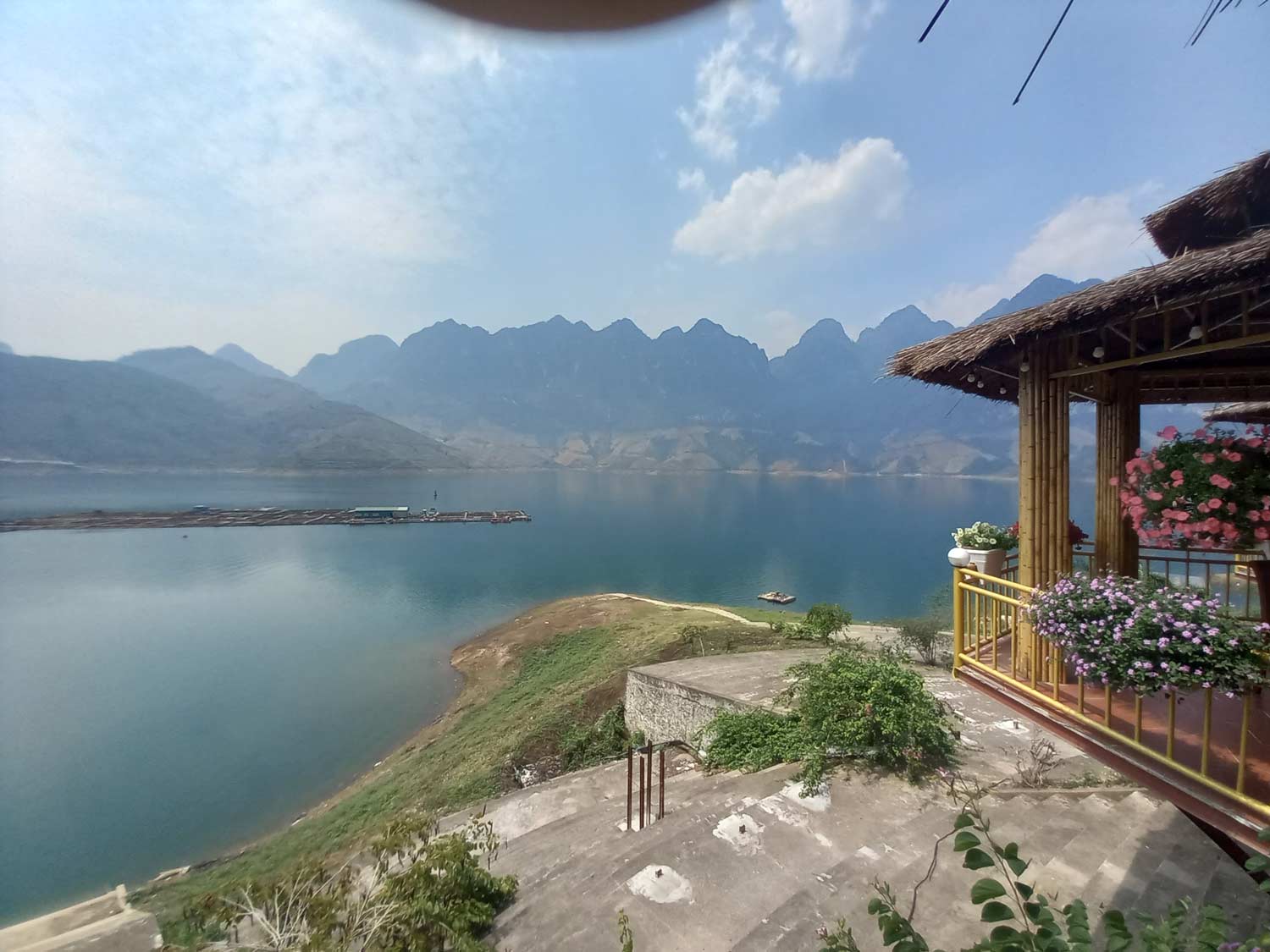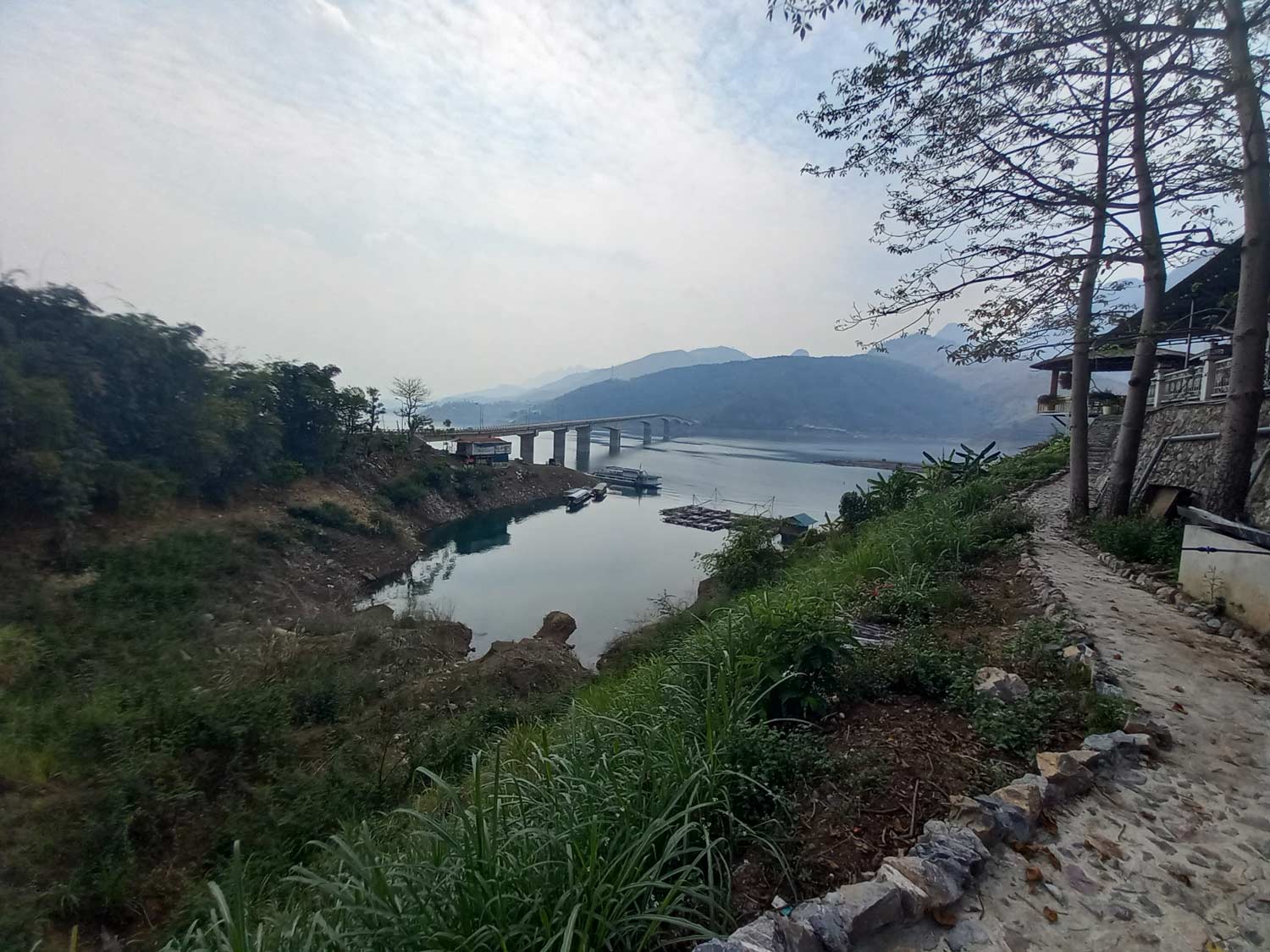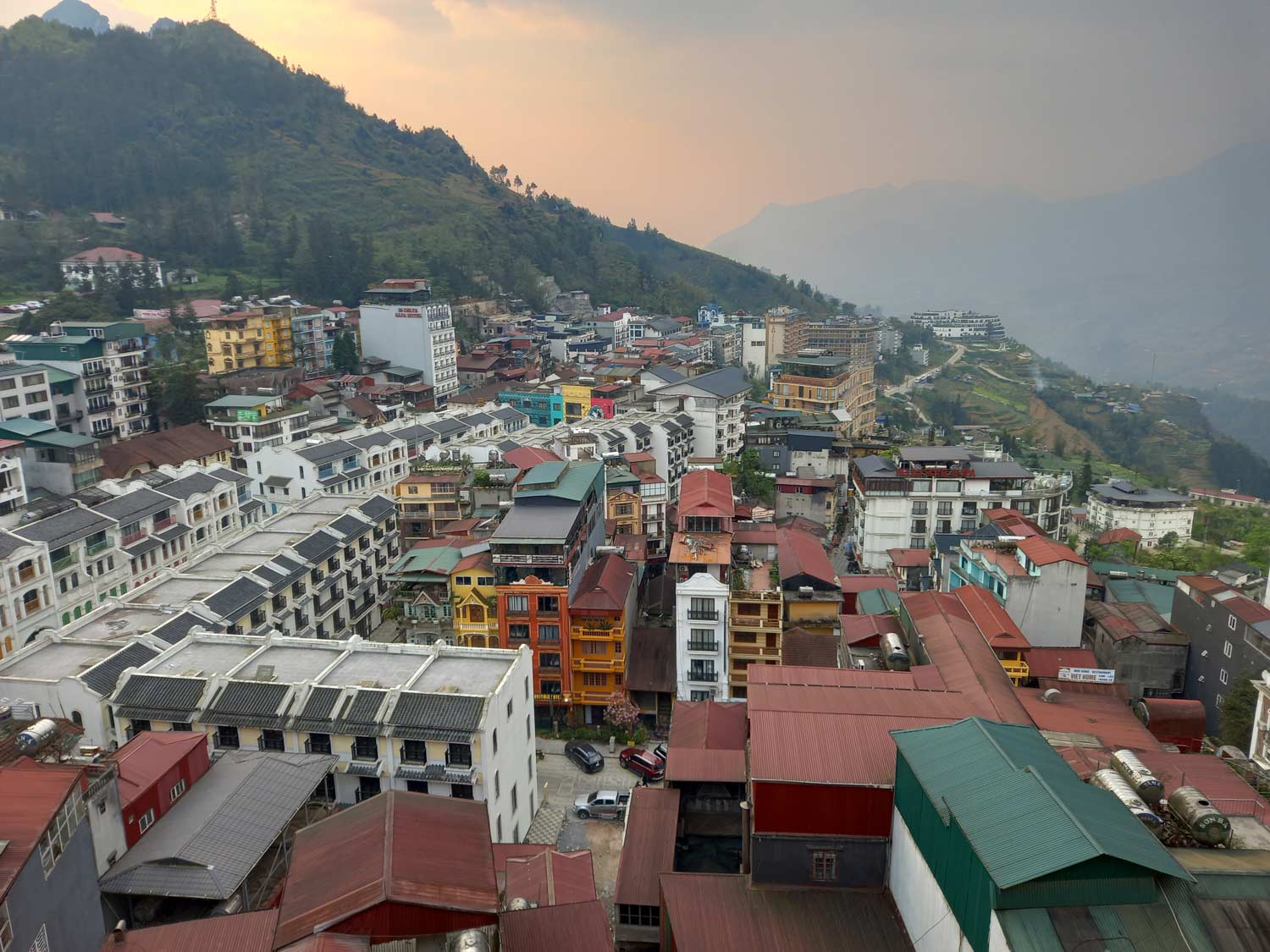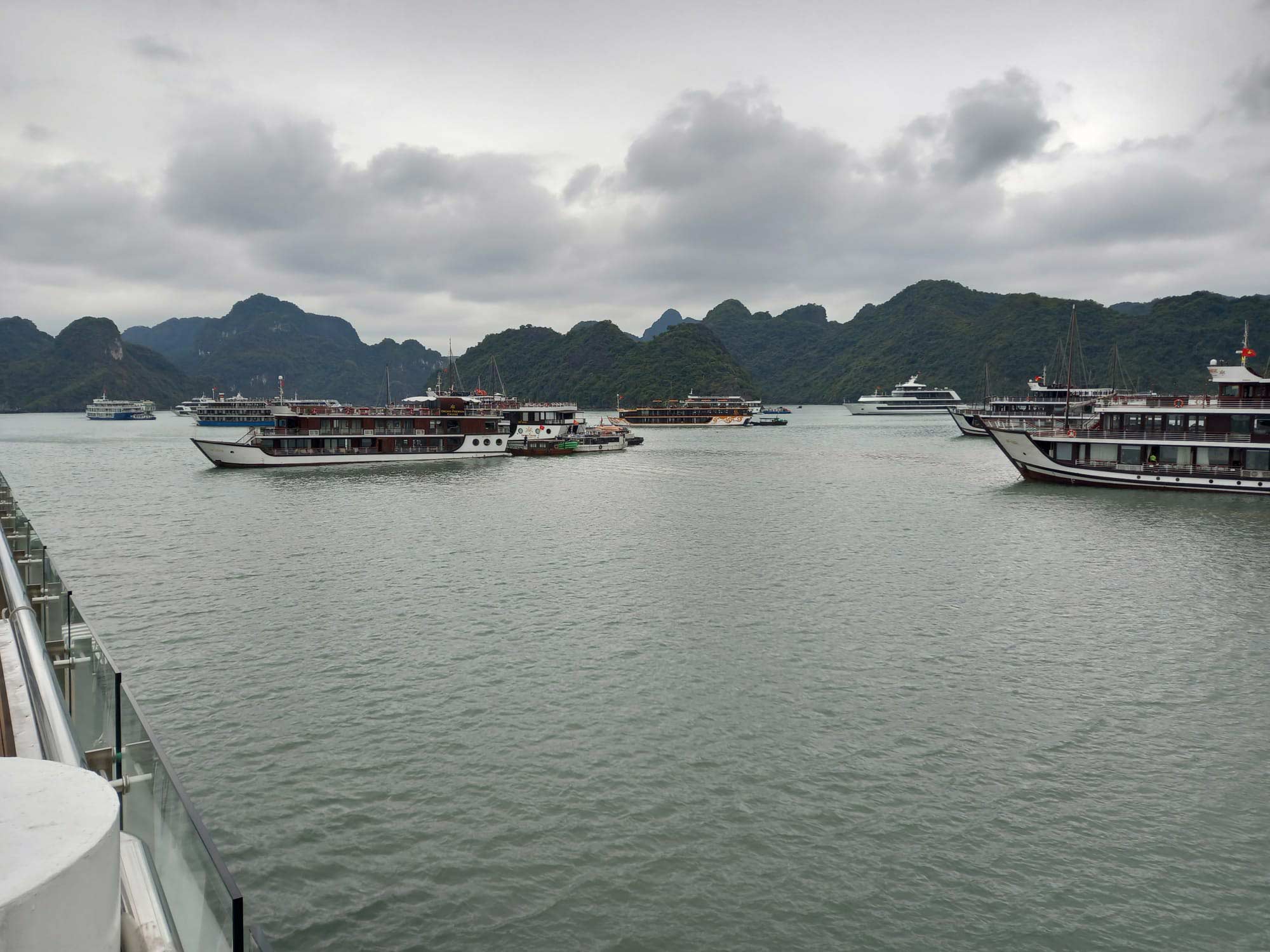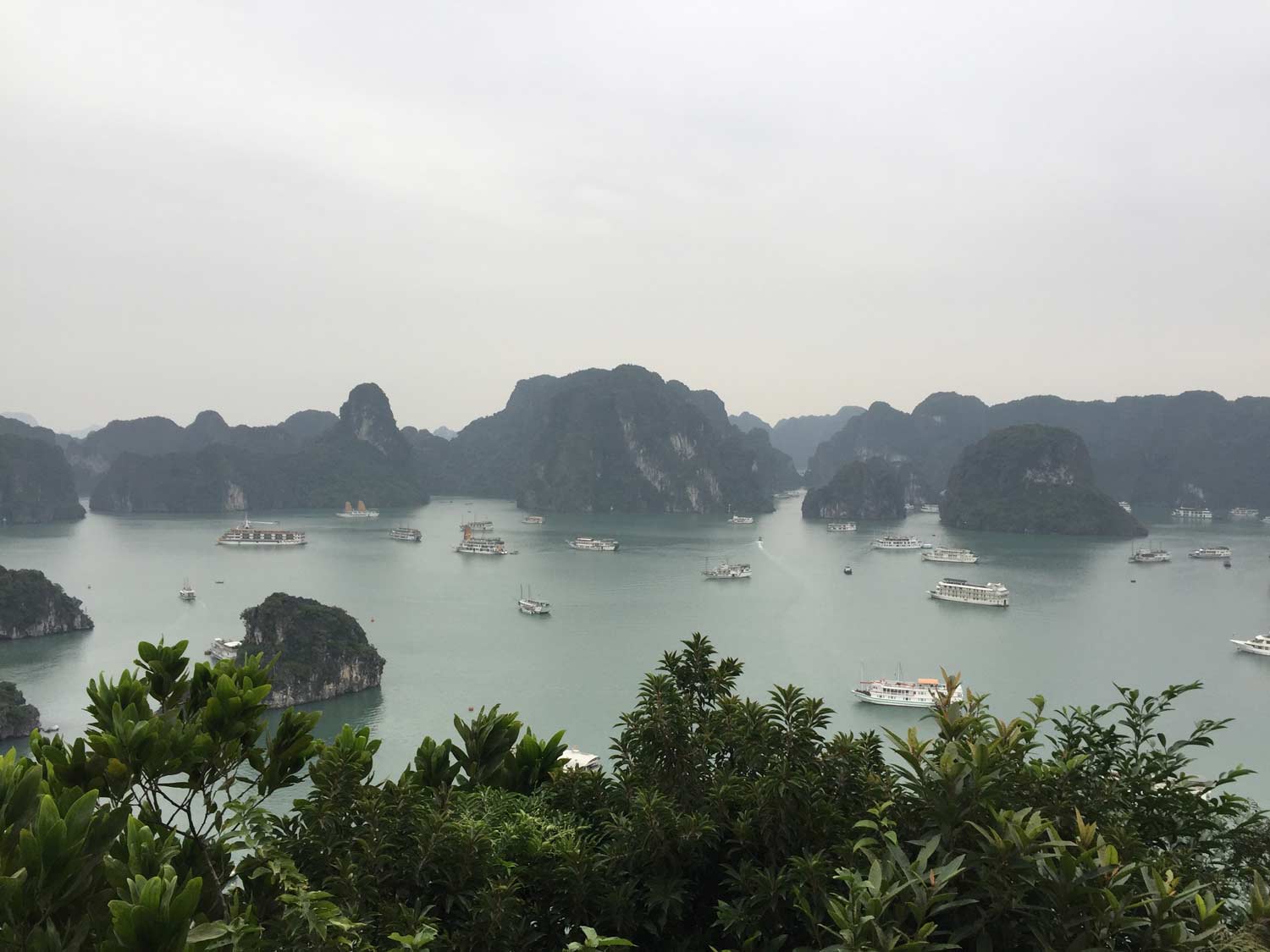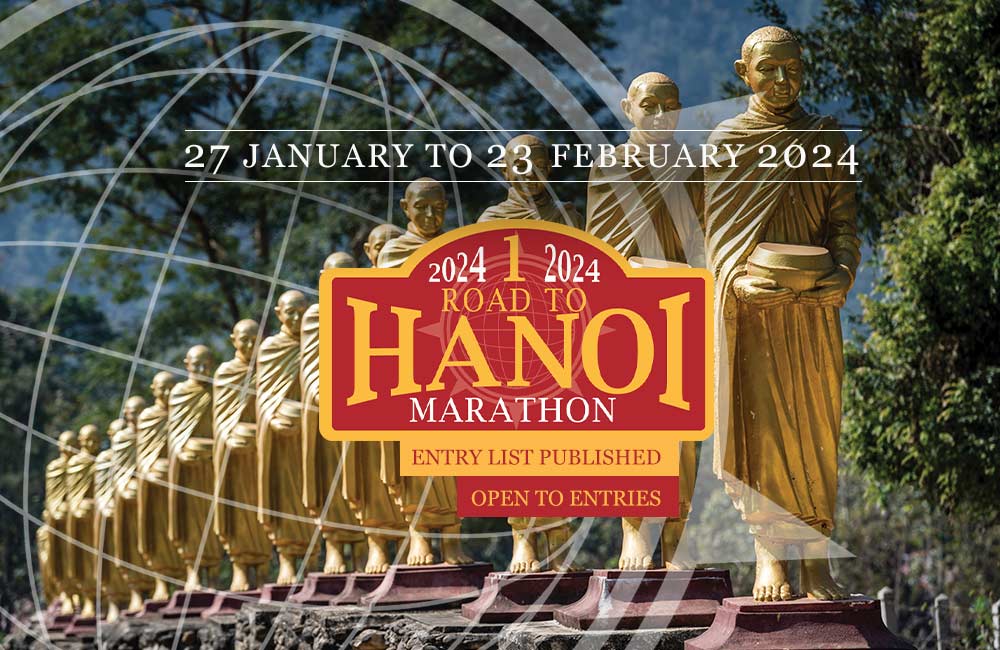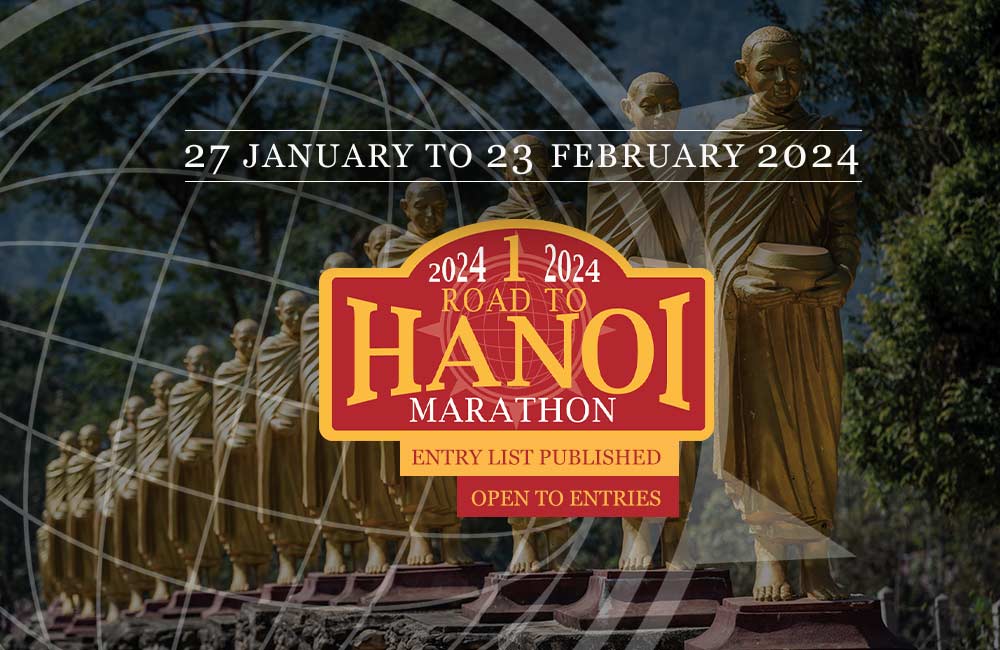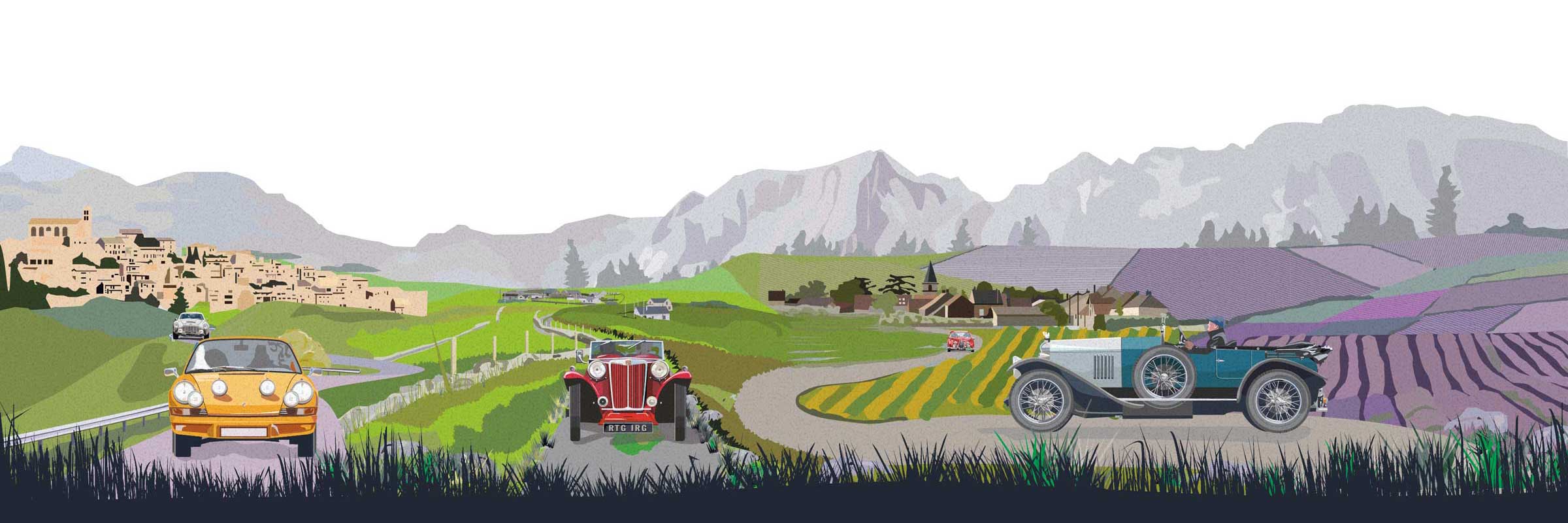Day 20 Oudomxay to Dien Bien Phu 215 Kms
Although this is a border day and usually reserved for transit, we couldn’t resist using the road from the resort for a short regularity section before joining the road towards the border and the final border crossing for the event.
The road to the border is an interesting drive, twisty and hilly as expected in a mountain area, but often narrow in places, particularly in villages.
The locals seem to treat the road as their front room as the houses are built almost onto the road and the families then sit, work, cook and play on the very edge, and sometimes even into, the road.
As we drive along the top of the river valley, we could see below floating bridges connecting one village to another and locals panning for gold, no doubt hoping for the big nugget that would change their lives.
A recently opened guest house by the Nam Ou River will be our coffee stop for the morning, the owners are currently building a restaurant on the opposite side of the road which is due to open later this year. They were really excited at the thought of the classic and vintage cars arriving, something very unusual for this area.
However good the coffee is we will need to move on and try to reach the border before they close for lunch around 12:00. Hopefully, the border closing will soon be a thing of the past as the Vietnam border is remaining open which will put pressure on the Laos side to do the same.
When the border is open the process seems quick and efficient, and we left our Laos agents behind and headed to Vietnam.
The 5 Kilometres between the Laos and Vietnam border is interesting, there are houses and also trucks that have clearly been parked for a while as they had strung up makeshift washing lines for their cabs and their clothes were drying well in the sun.
Once we reach the Vietnam border, we will be reunited with our Vietnam contacts who will be there to help crews through the border process. Once across the border we will head to the town of Dien Bien Phu. On the road into the town, we pass rice fields which grow a very famous type of rice, people from as far afield as Ho Chi Minh City travel just to buy bags of the local delicacy.
The name Dien Bien Phu may seem familiar to many people as it was the site of an epic and heroic battle between the French Colonial forces and the North Vietnamese Army. We should have time to visit an excellent museum on our way to the hotel. The museum tells the tale of the battle and features a fantastic diorama of the battlefield and many artifacts, well worth a visit.
Our hotel for the evening is close to the city centre so there will be a chance to explore and enjoy a nice cold beer before dinner. We have an earlier start in the morning.

